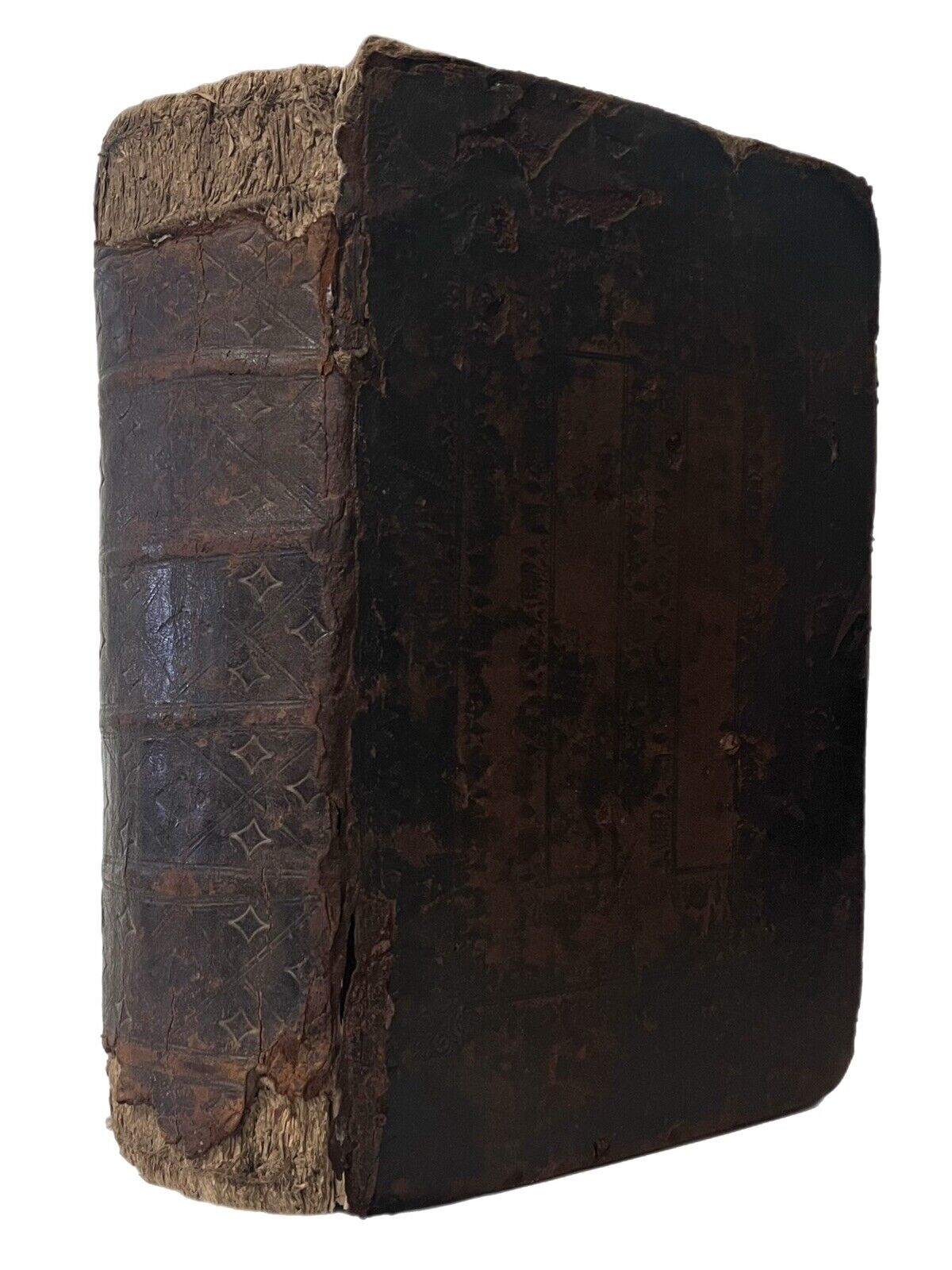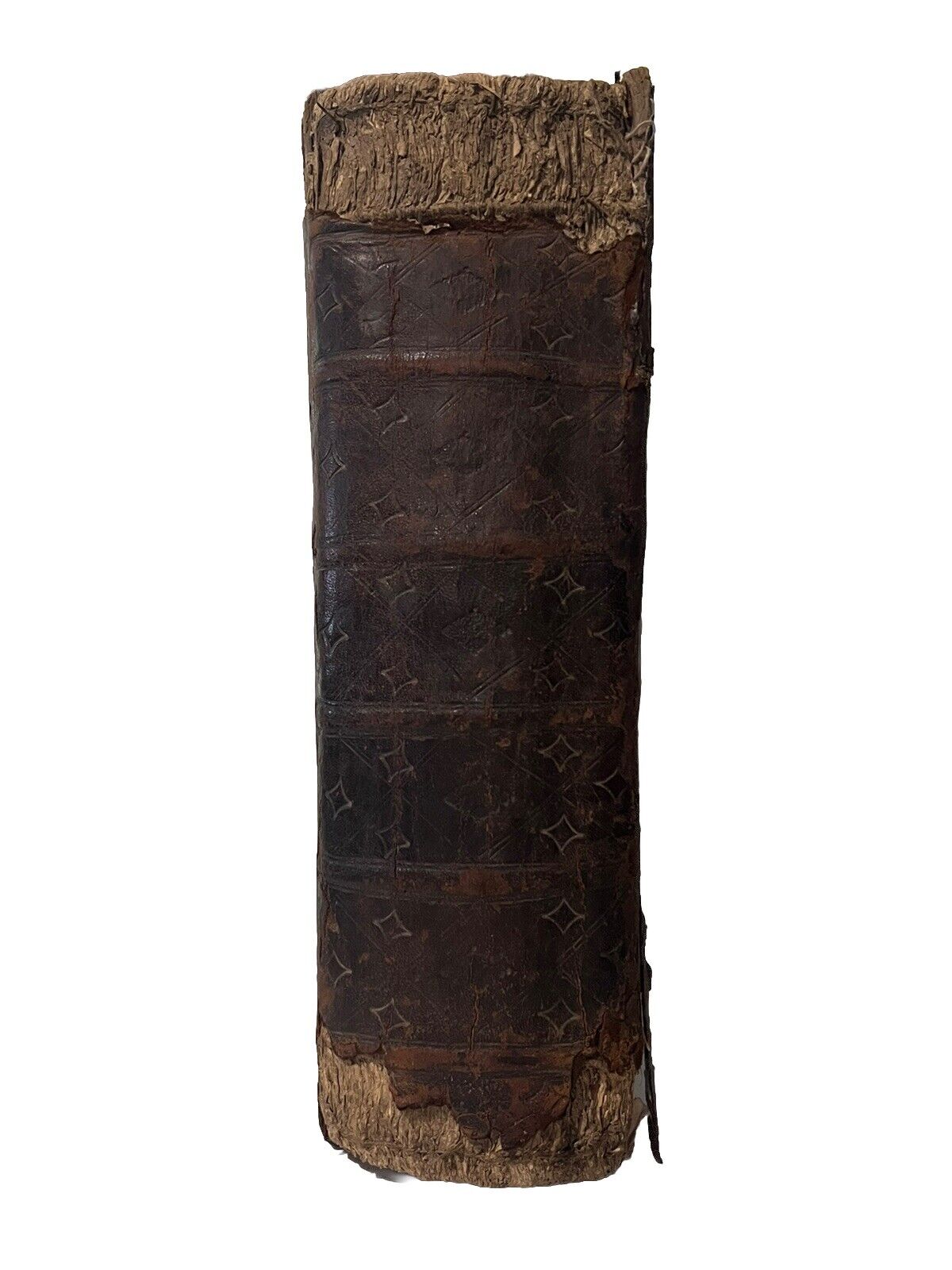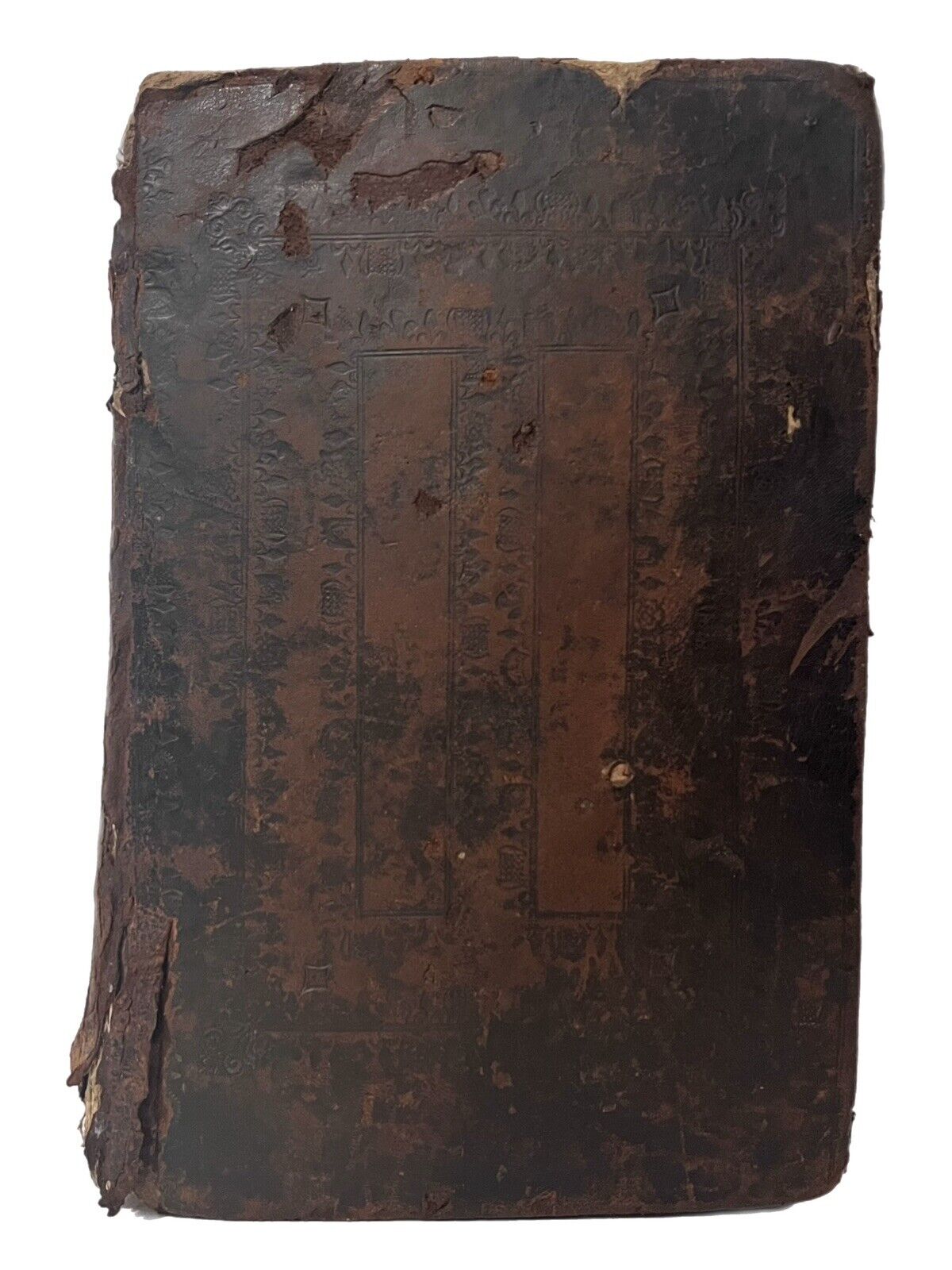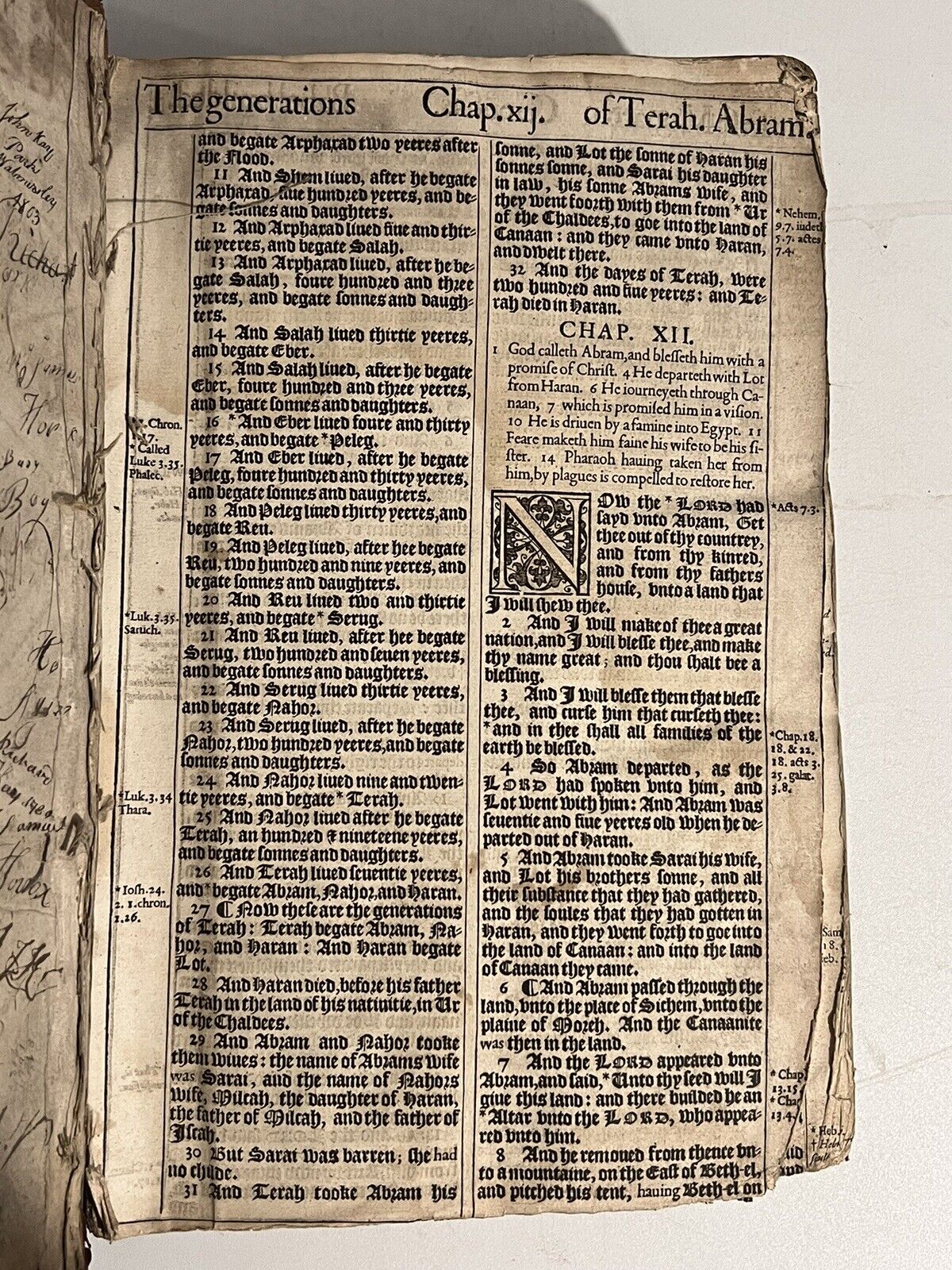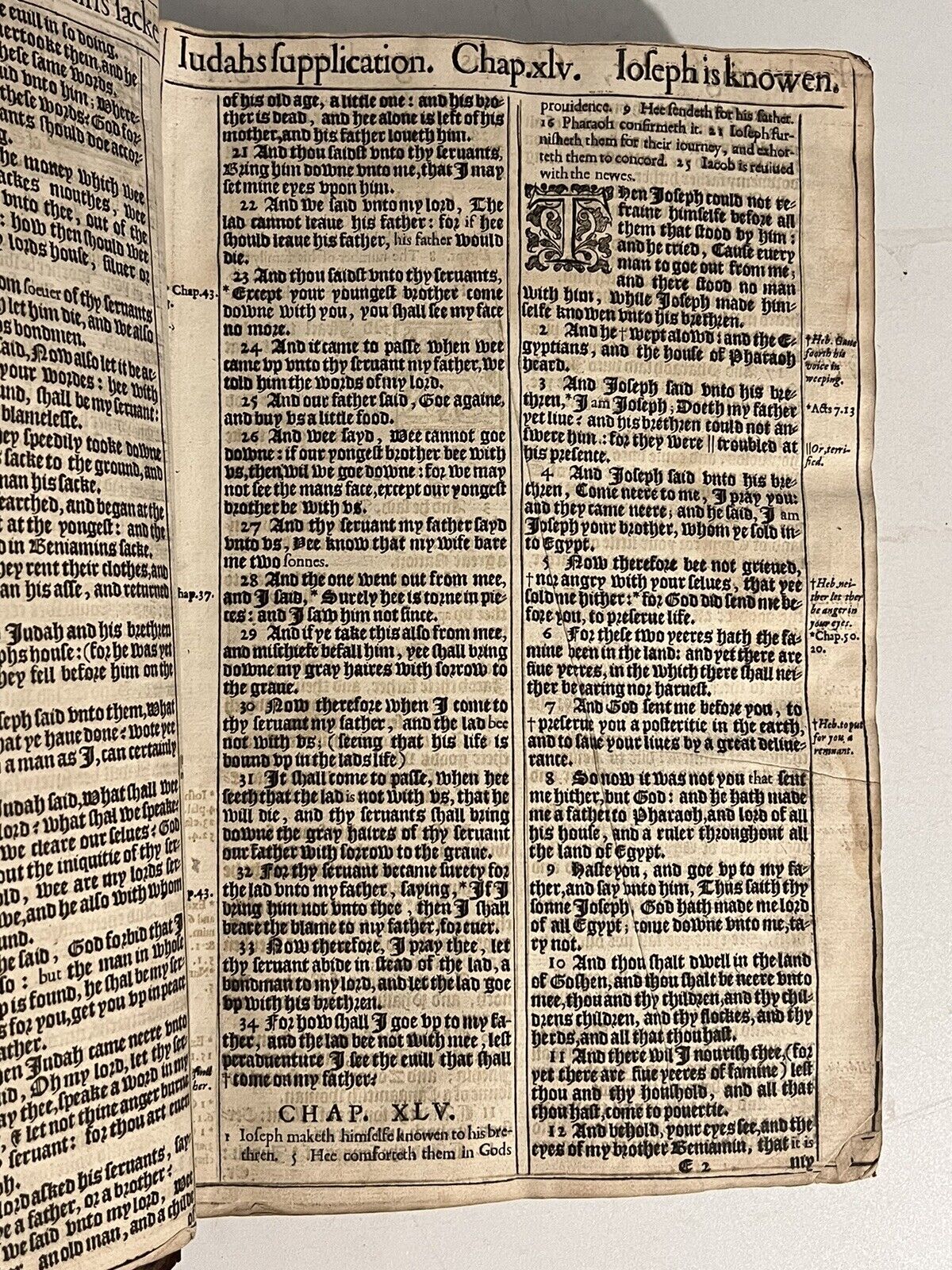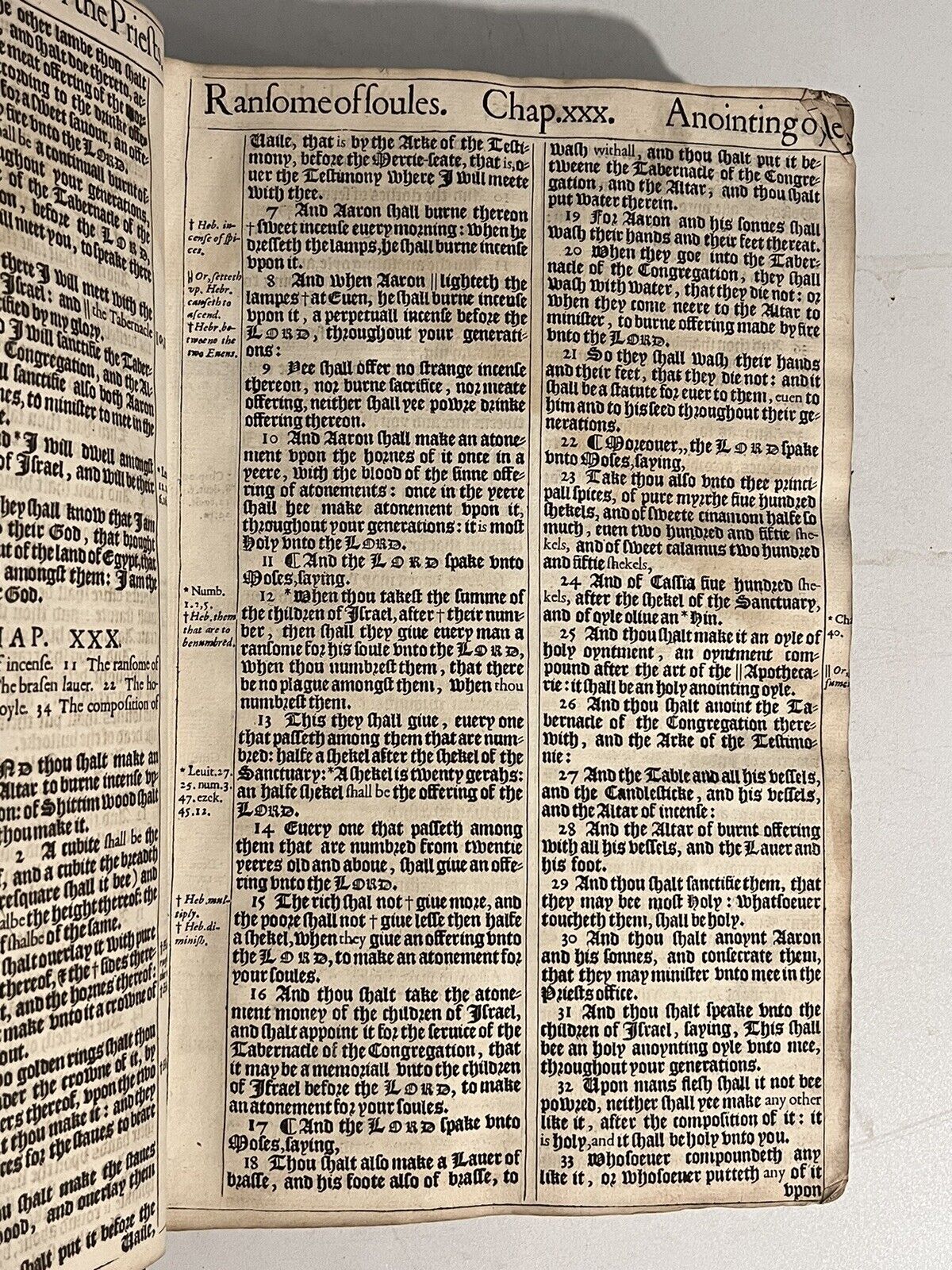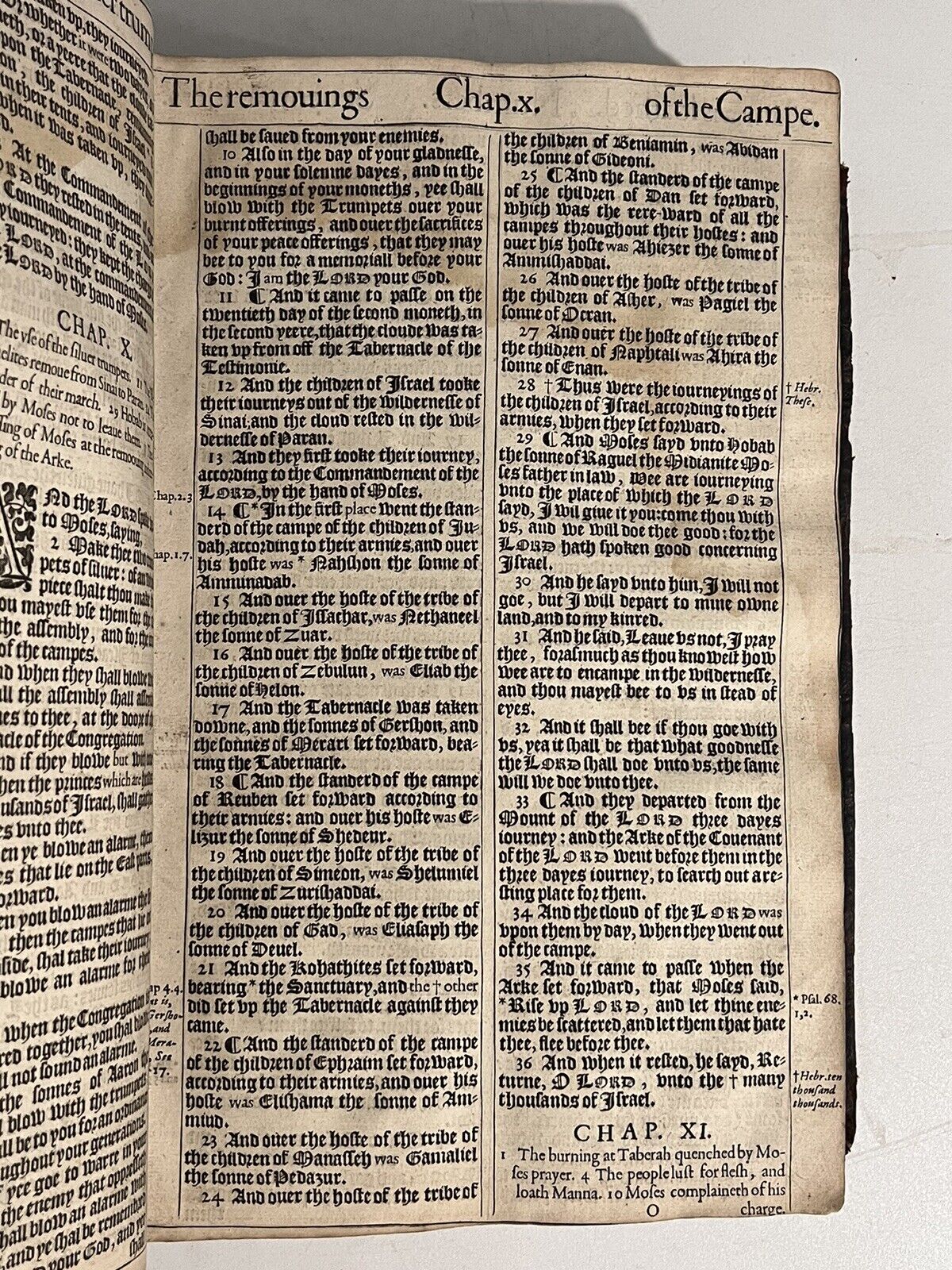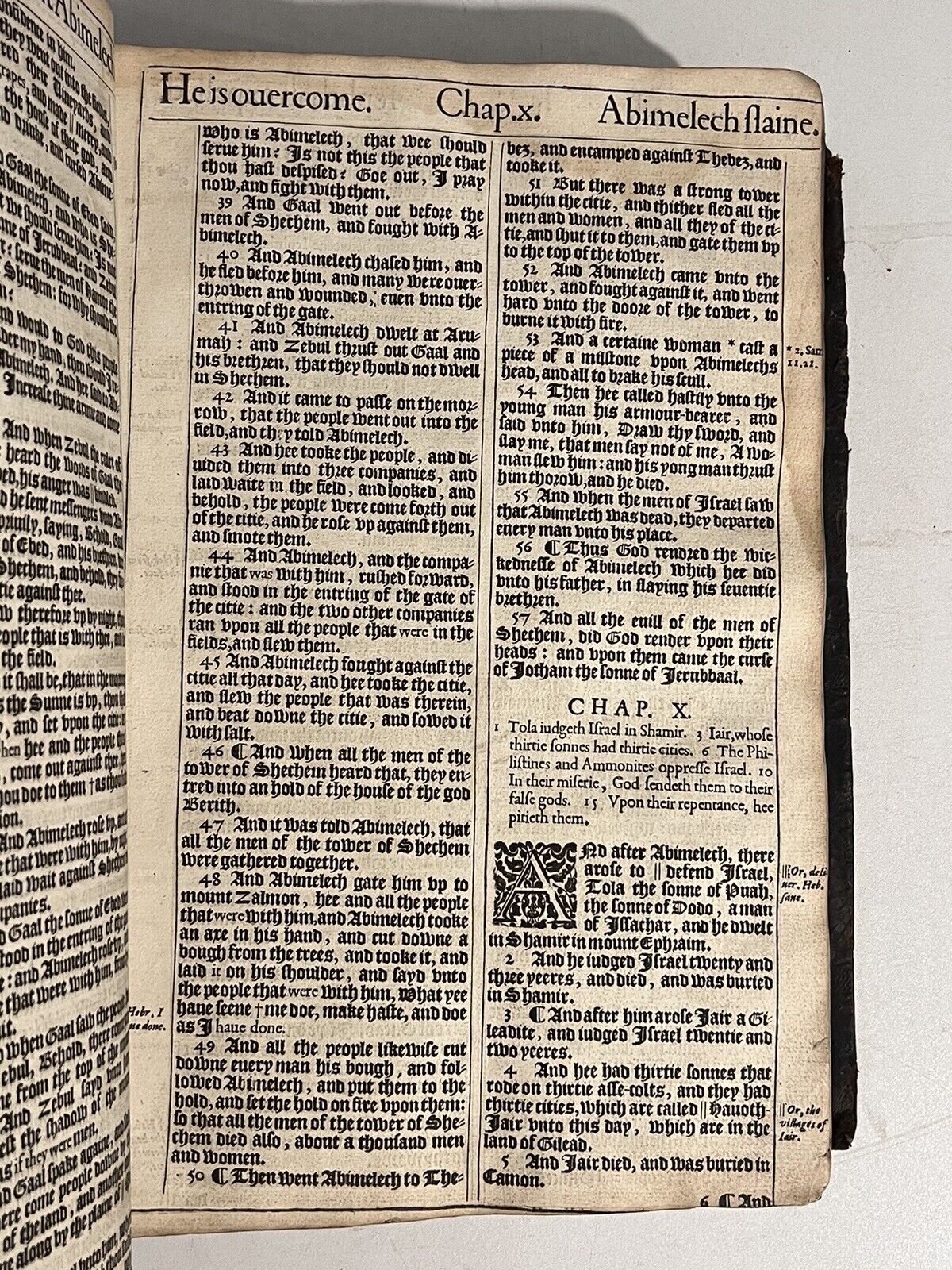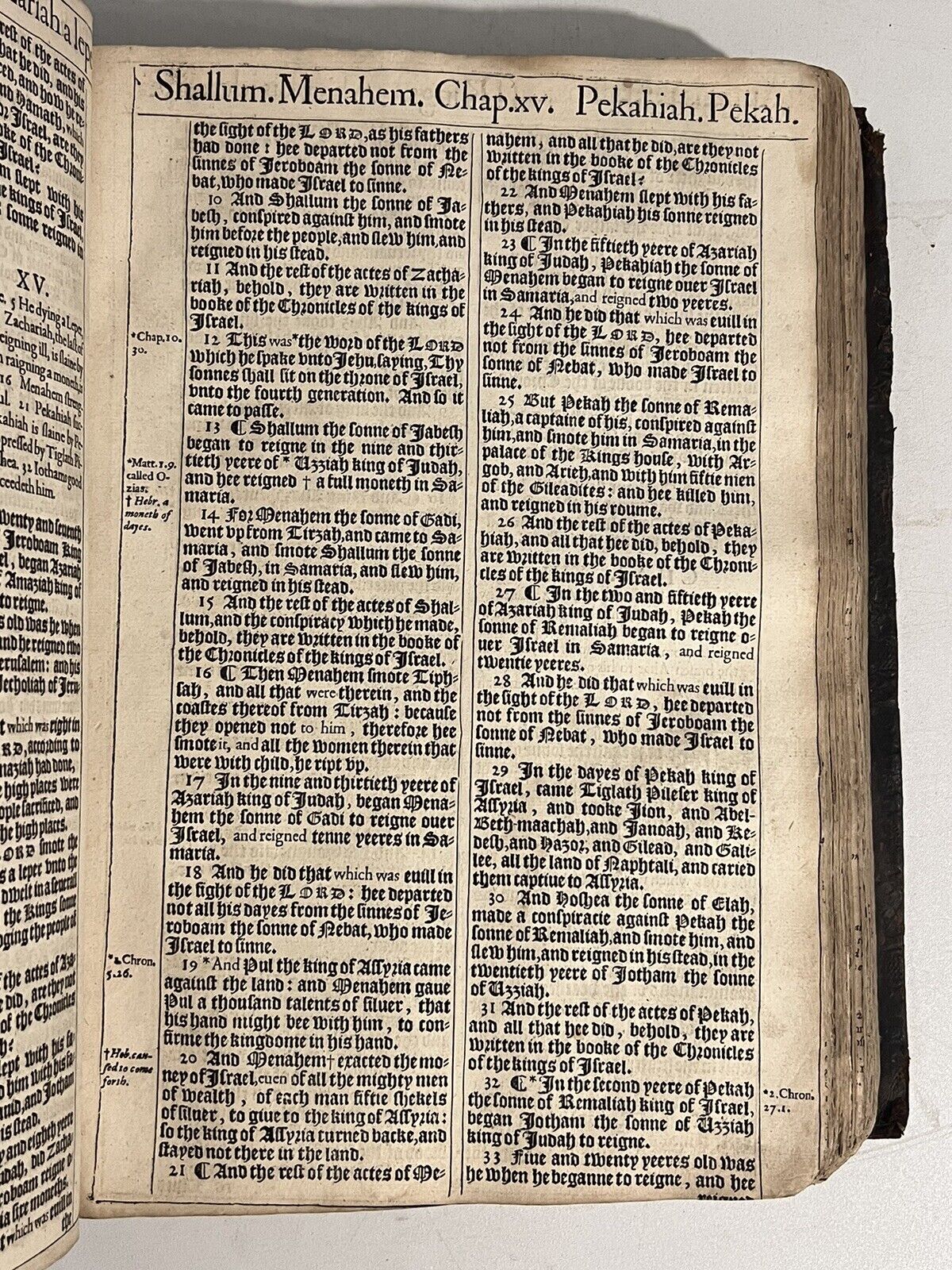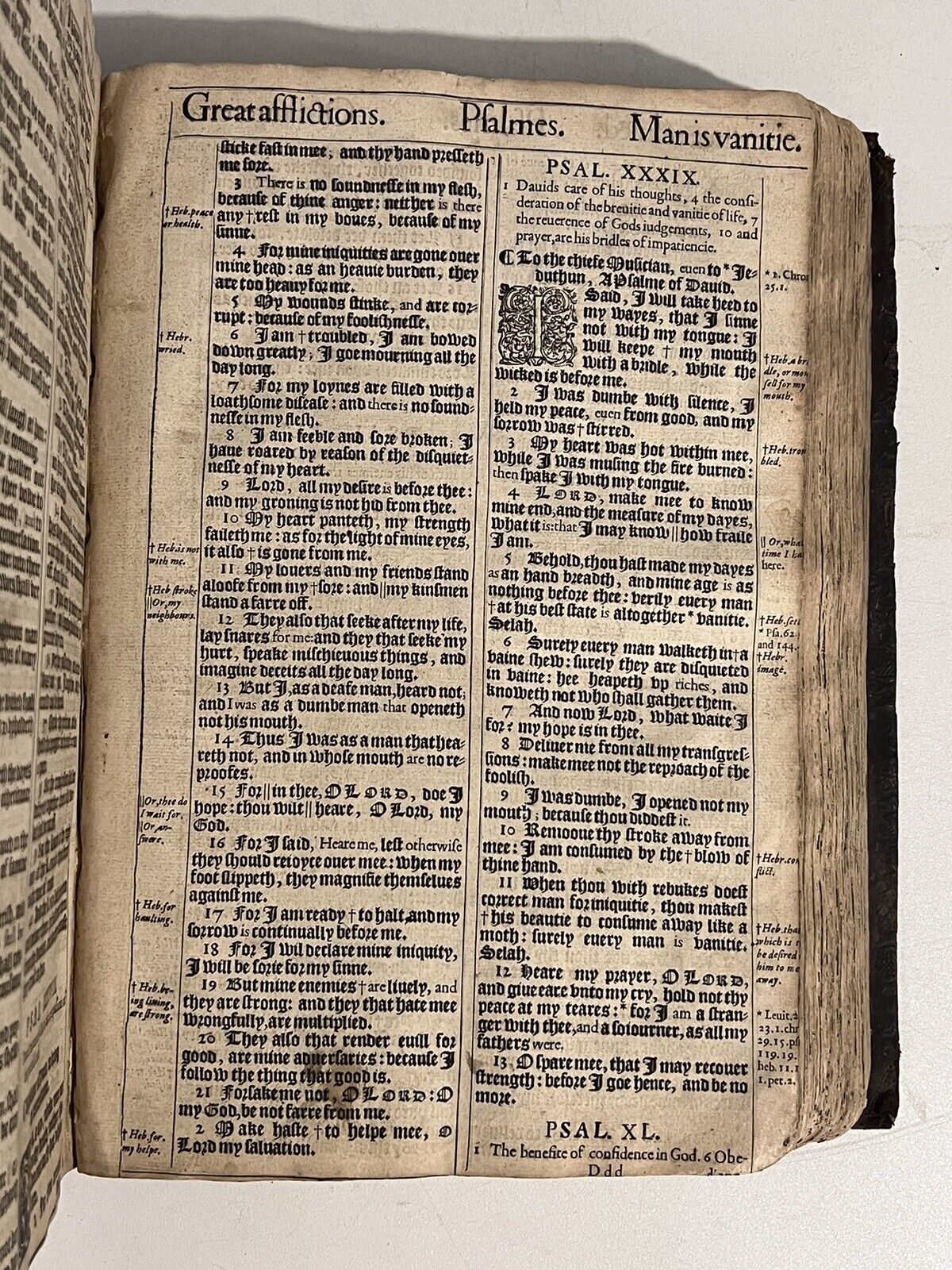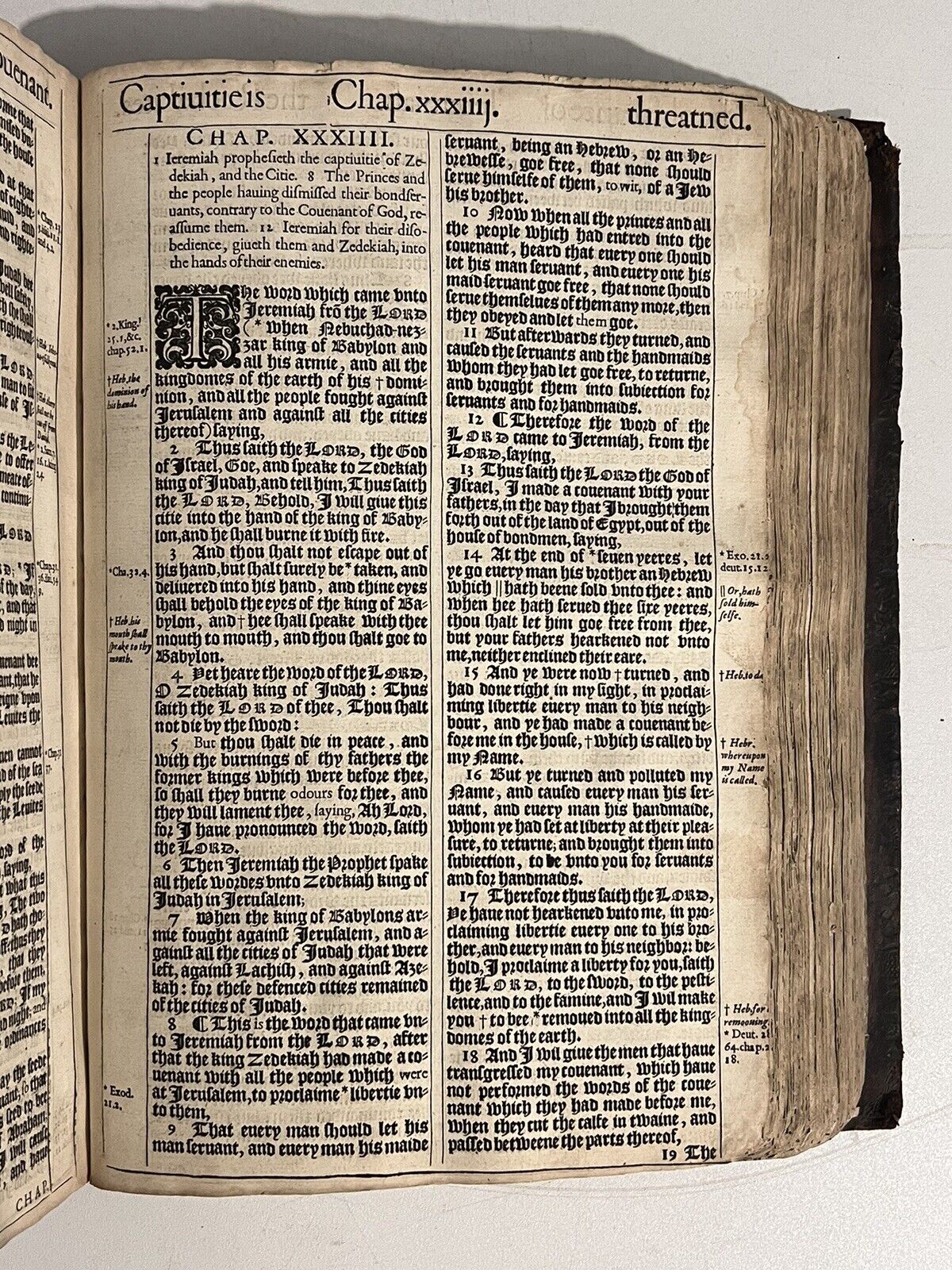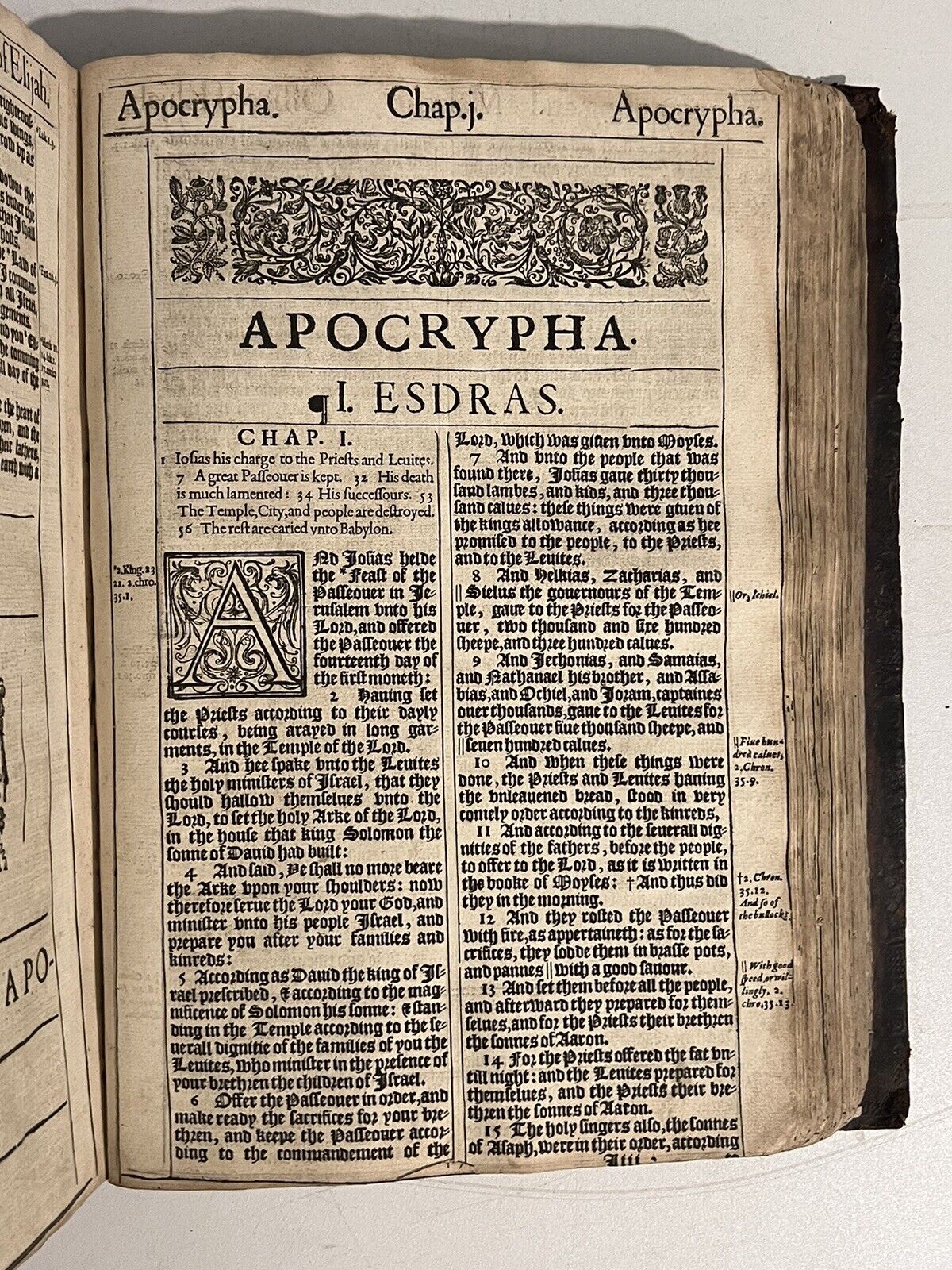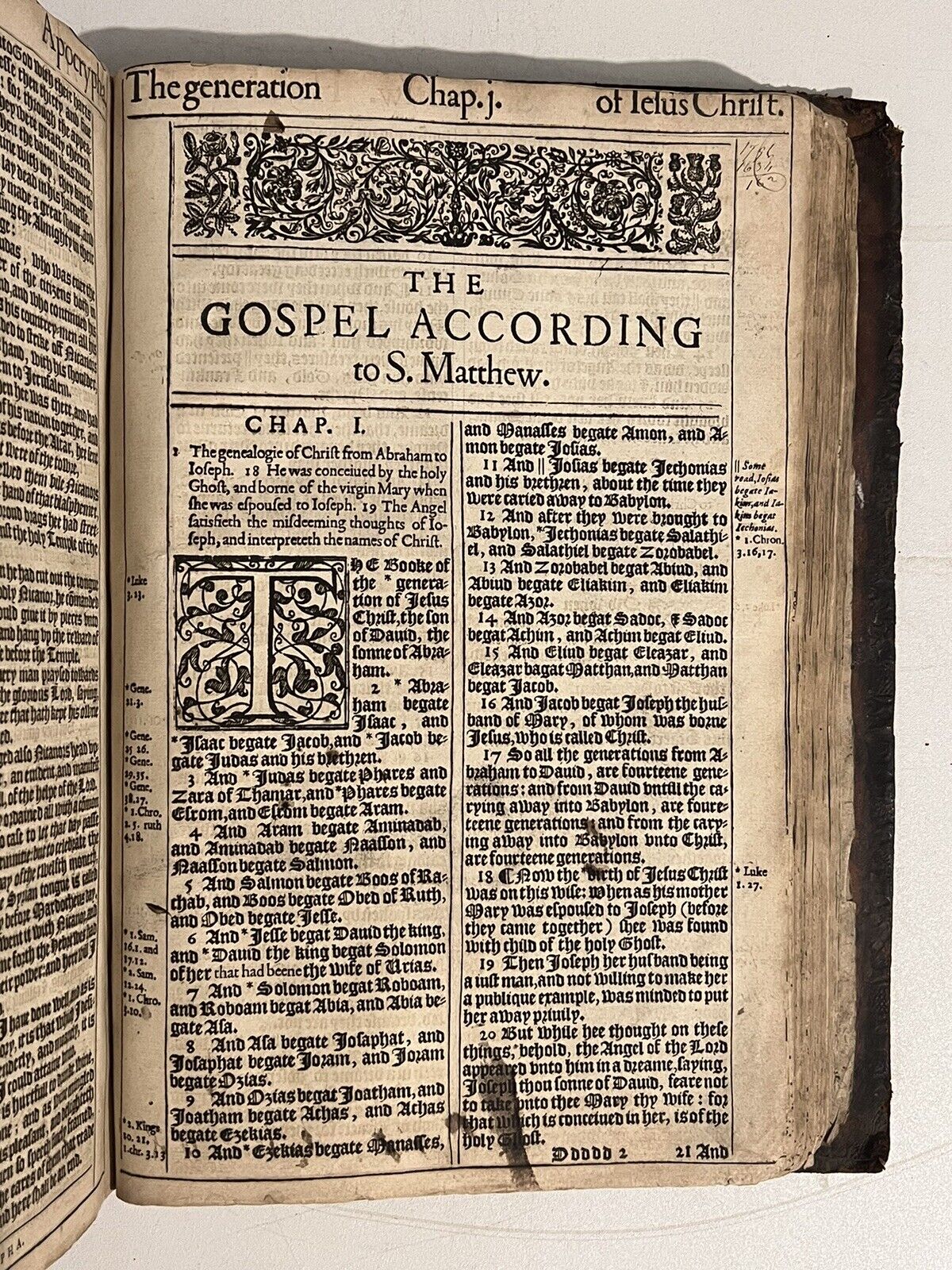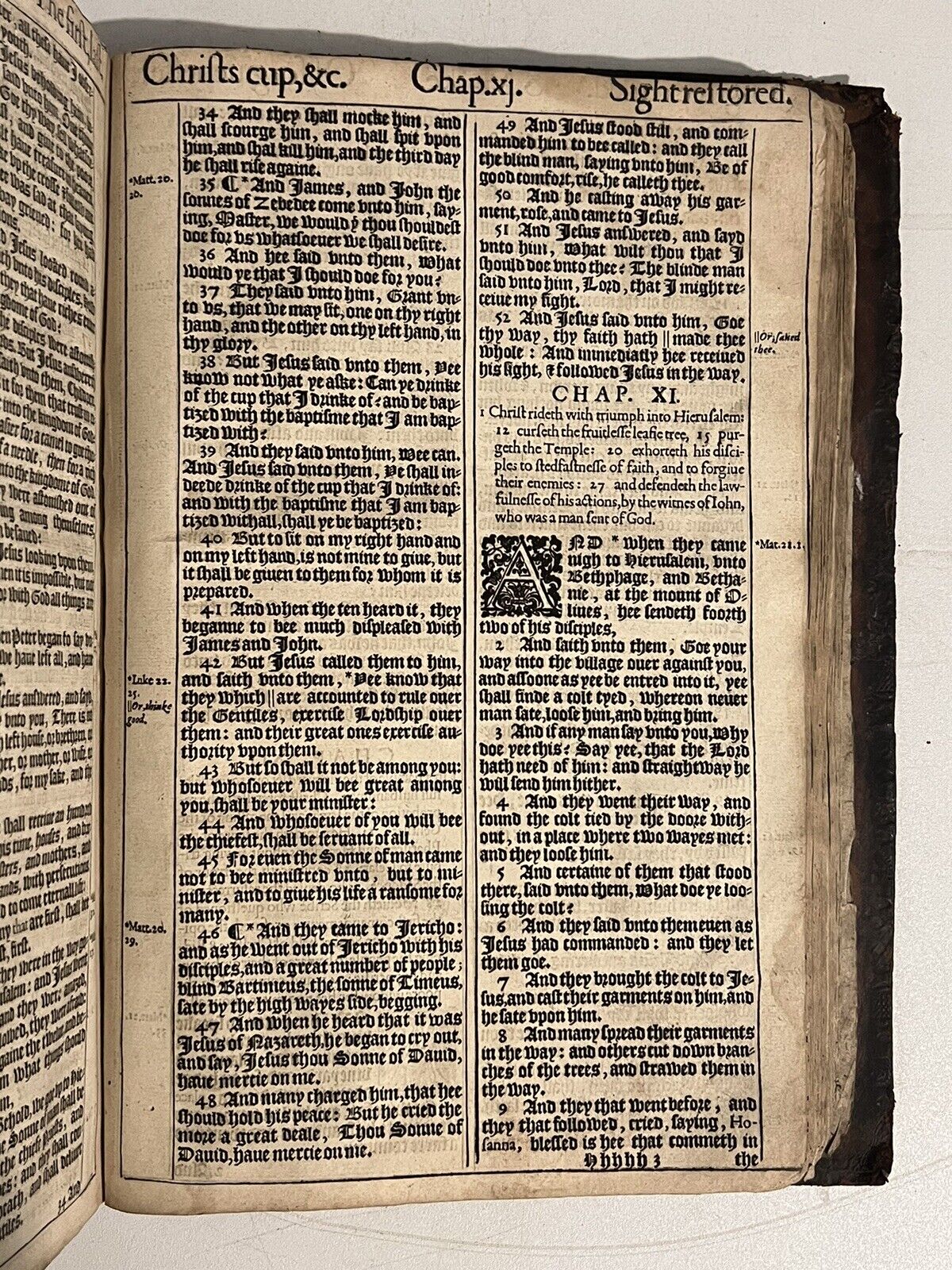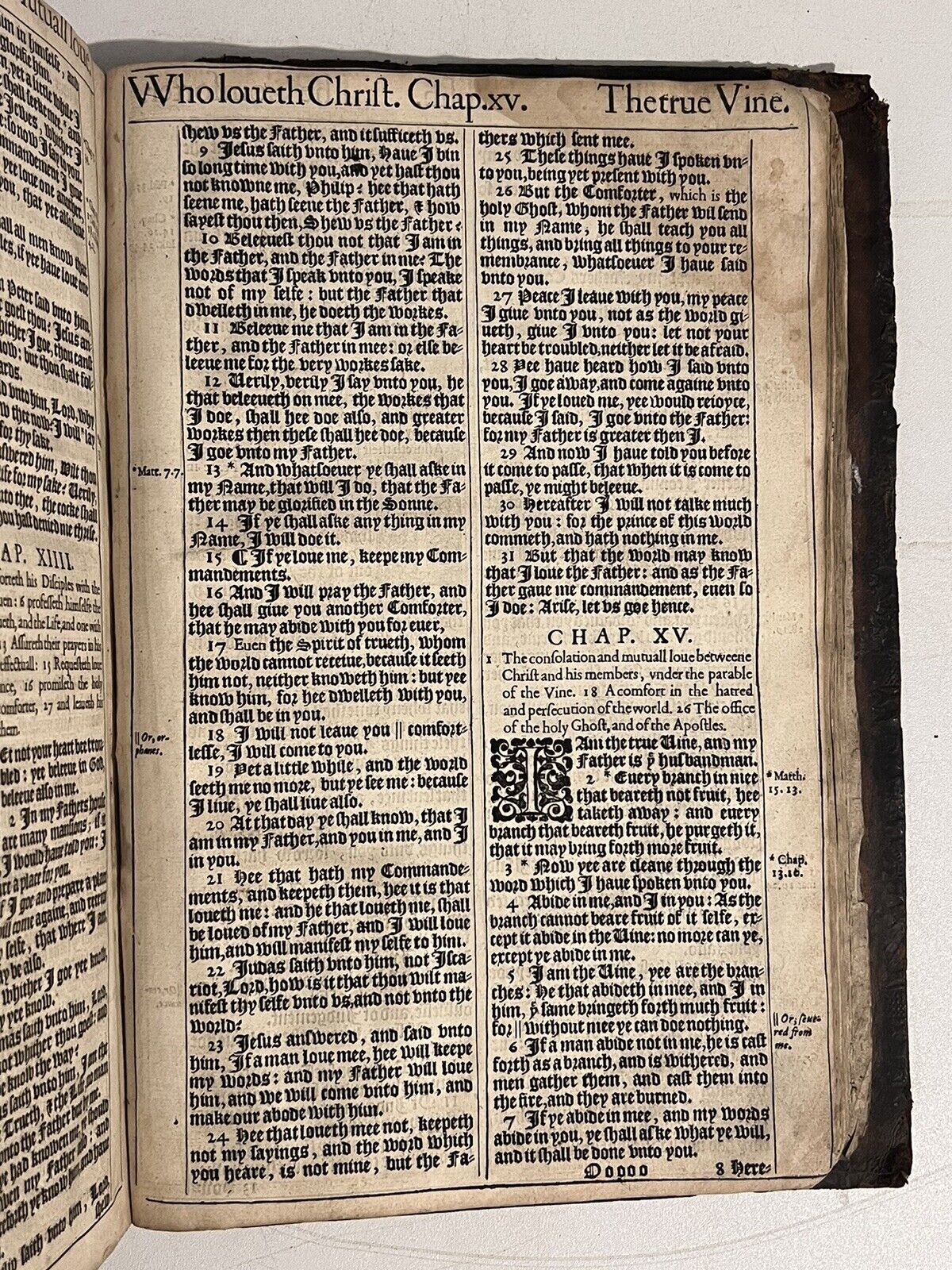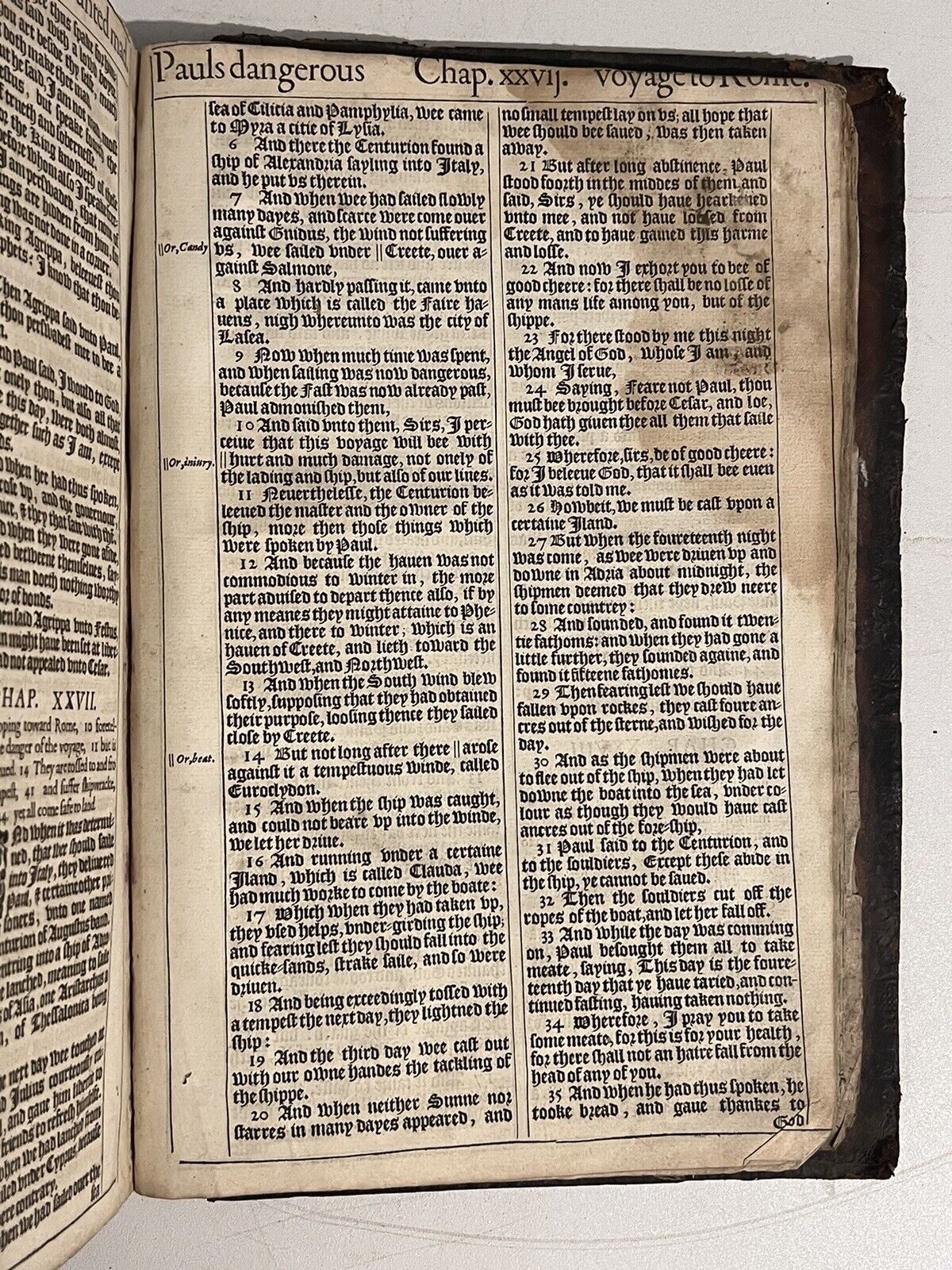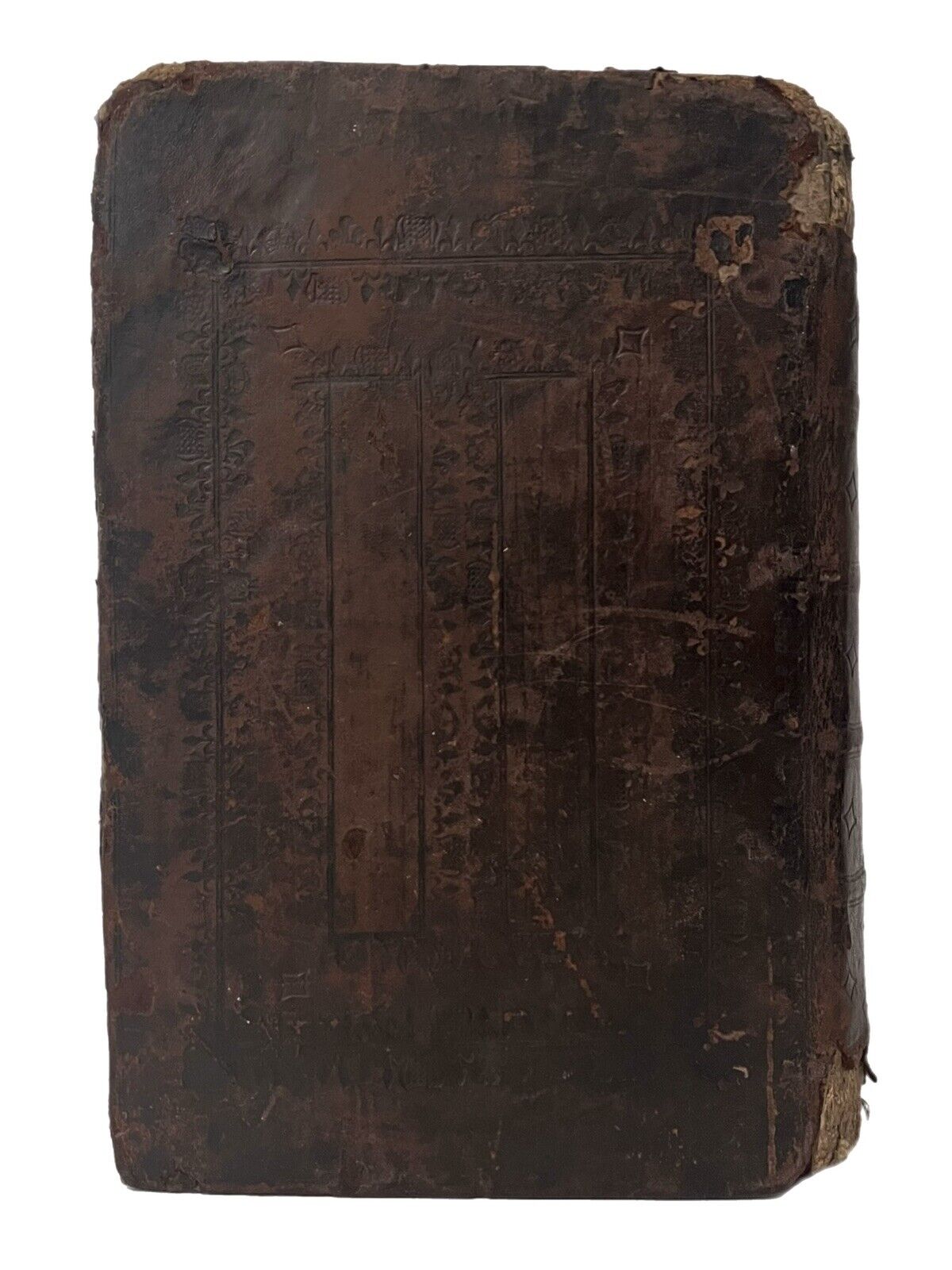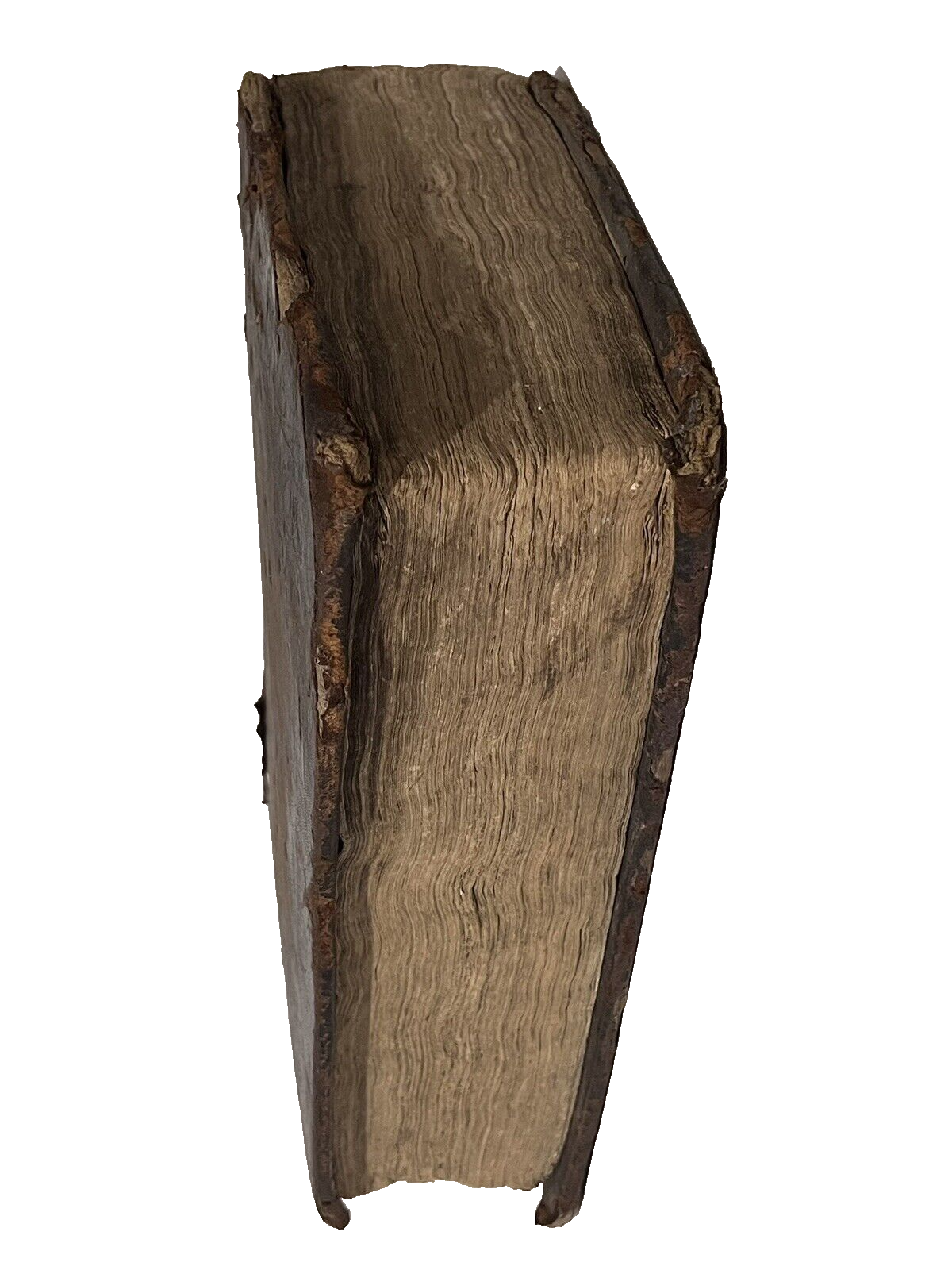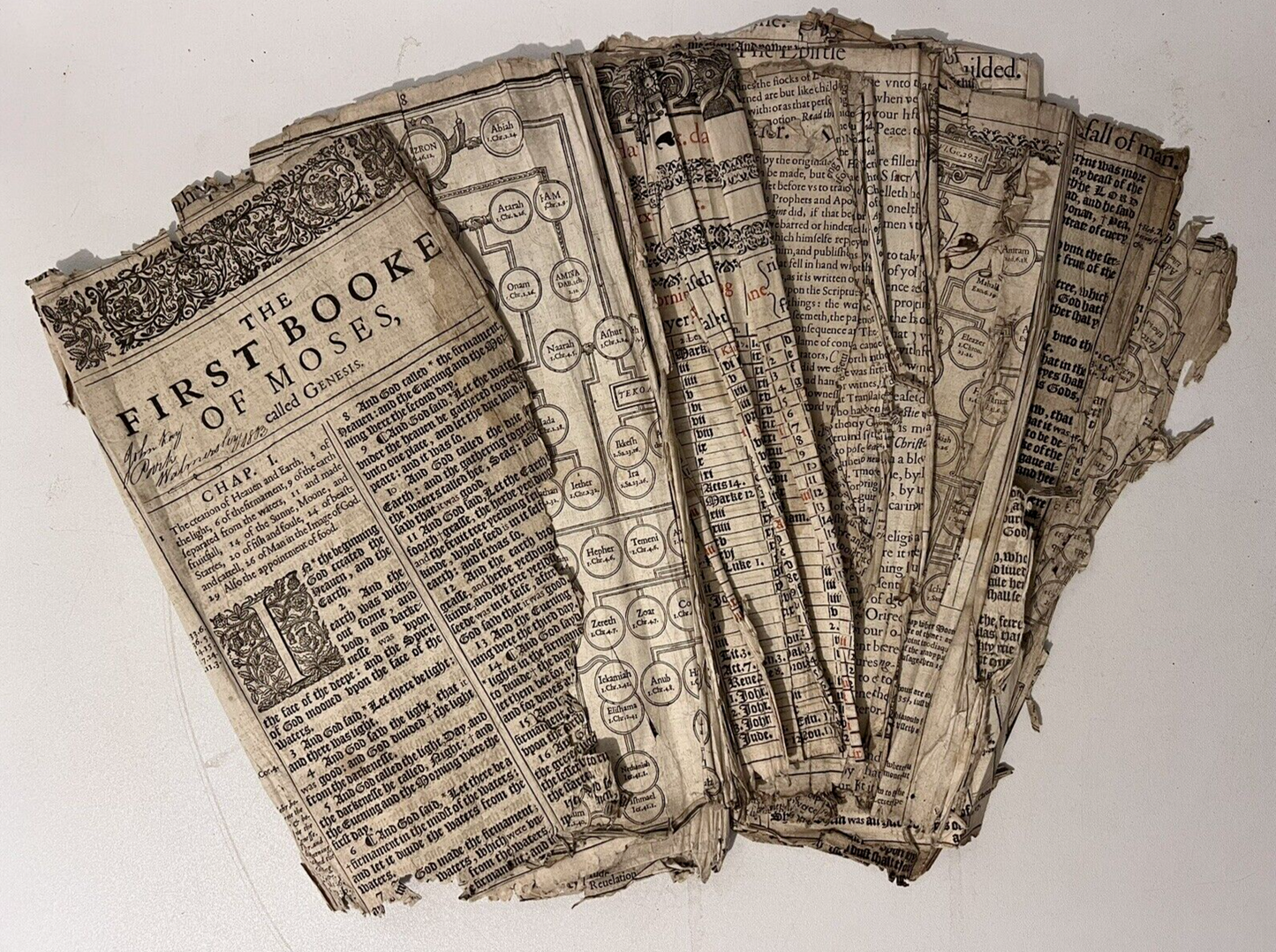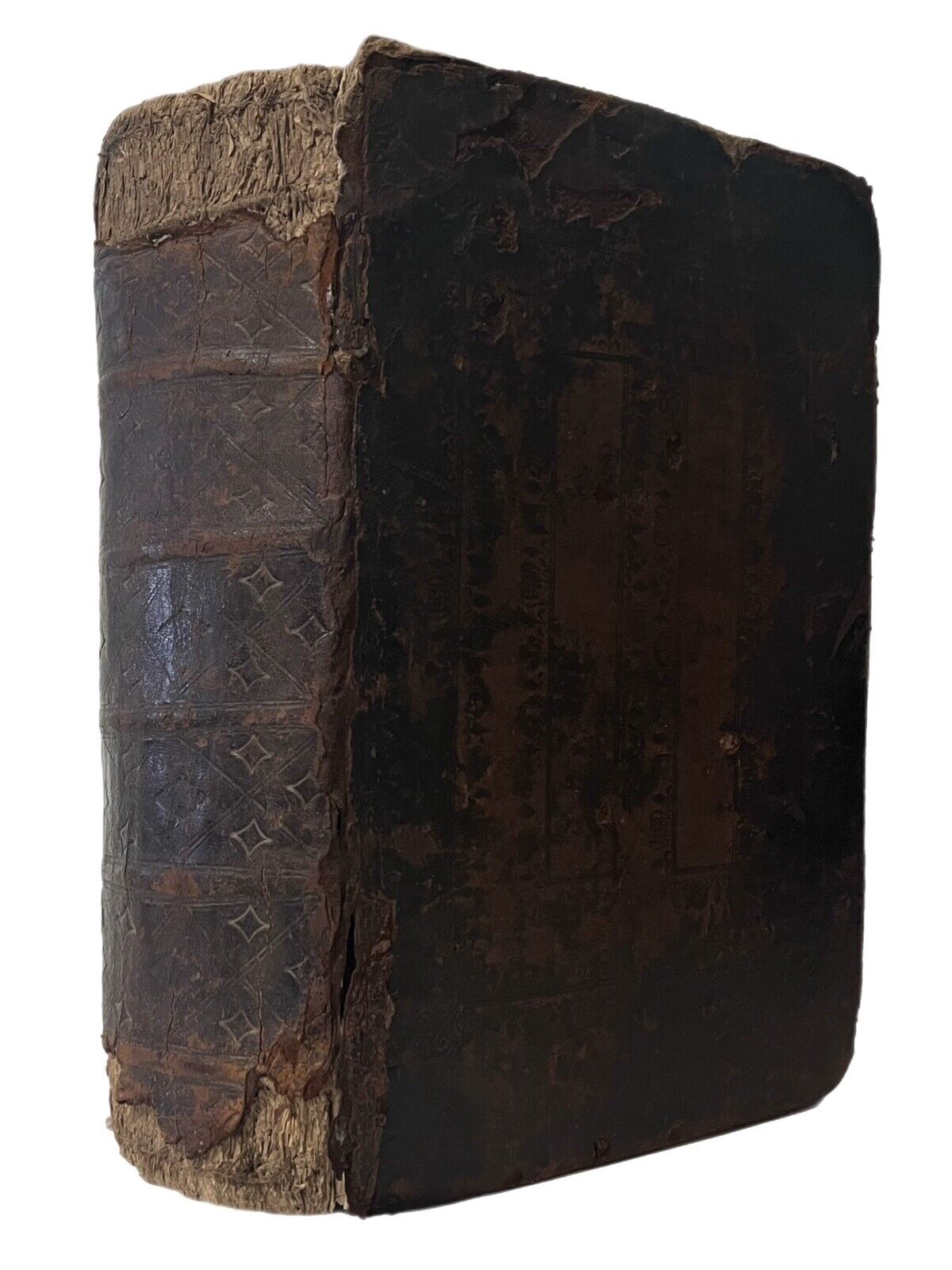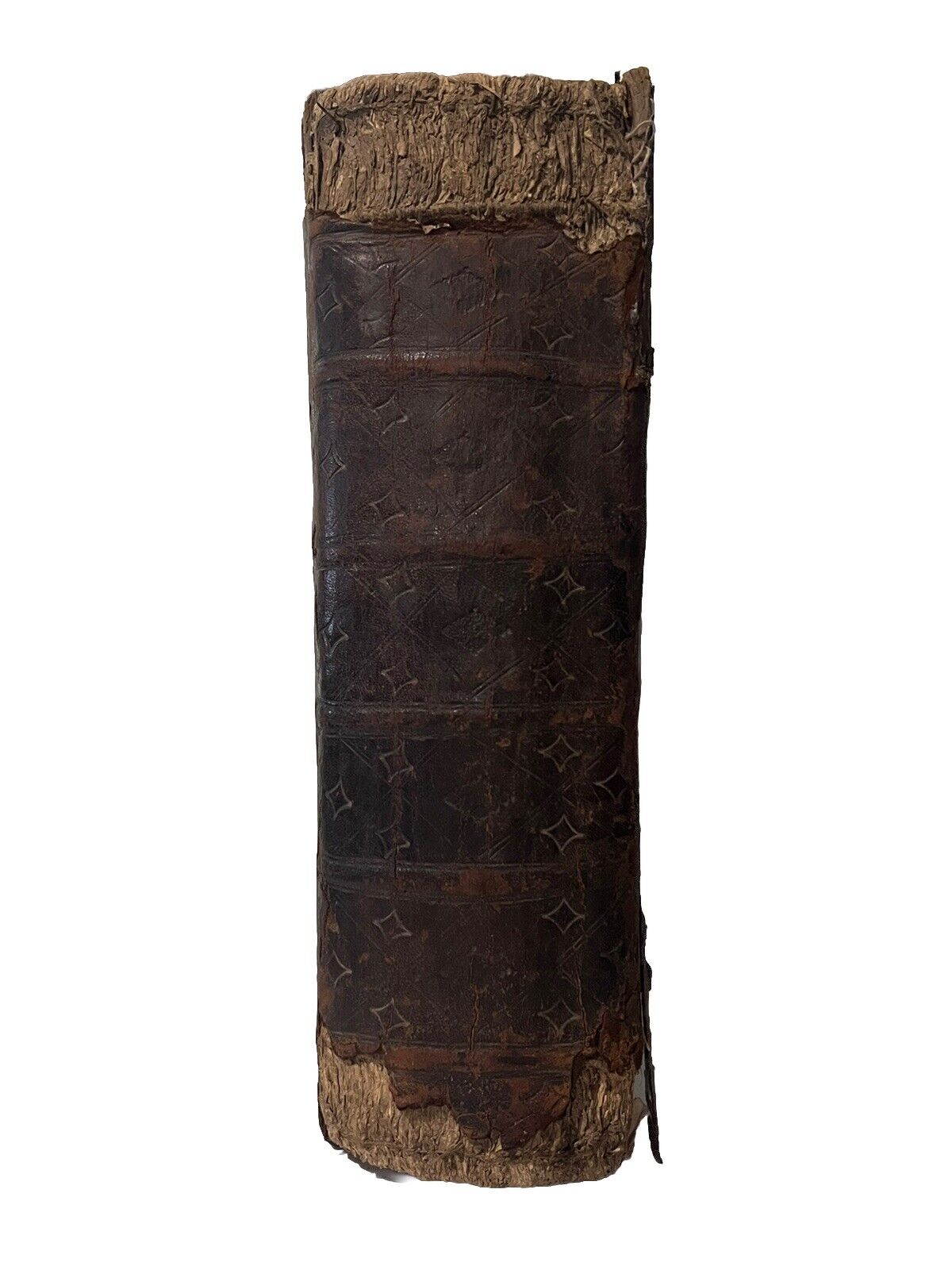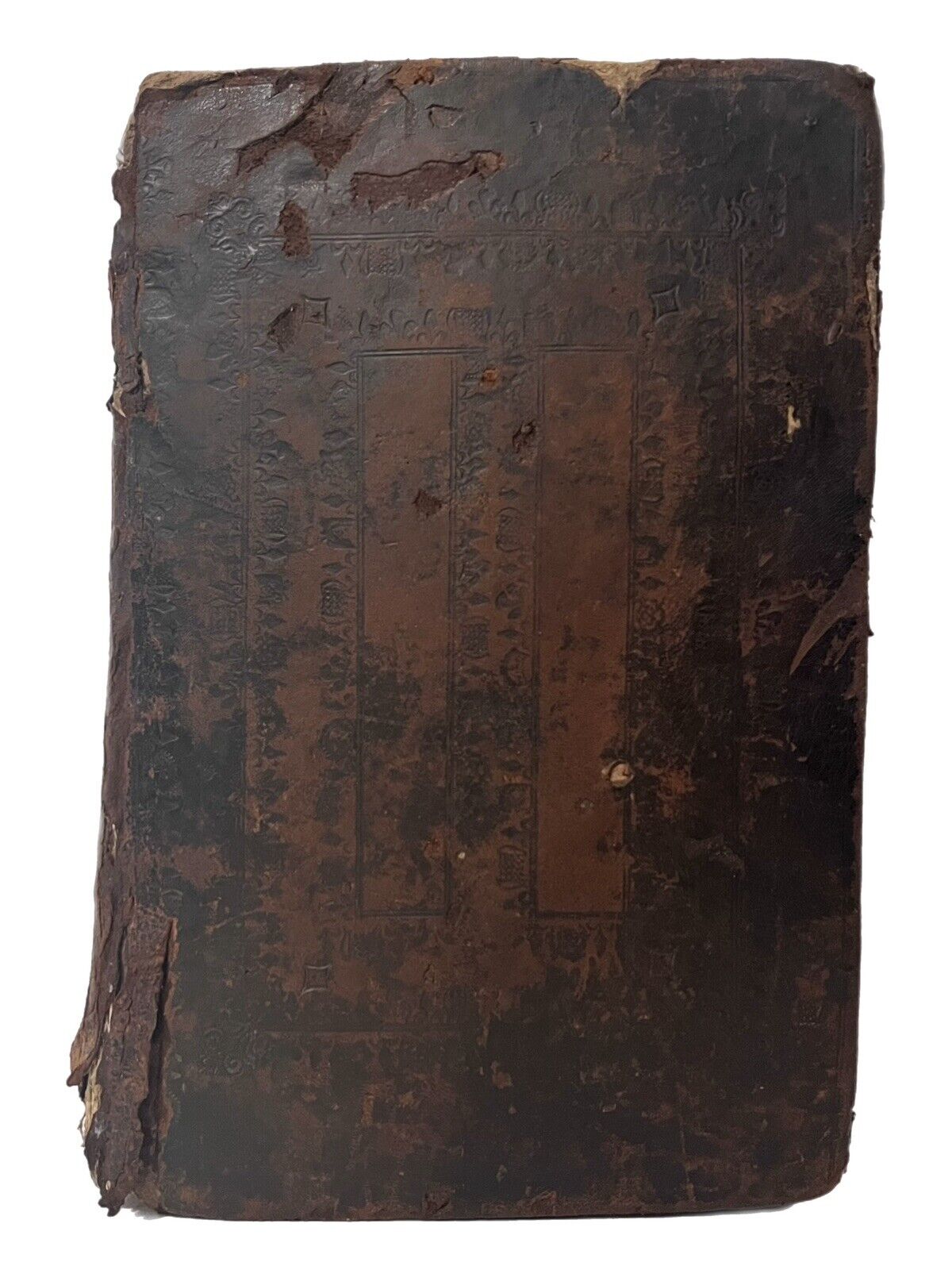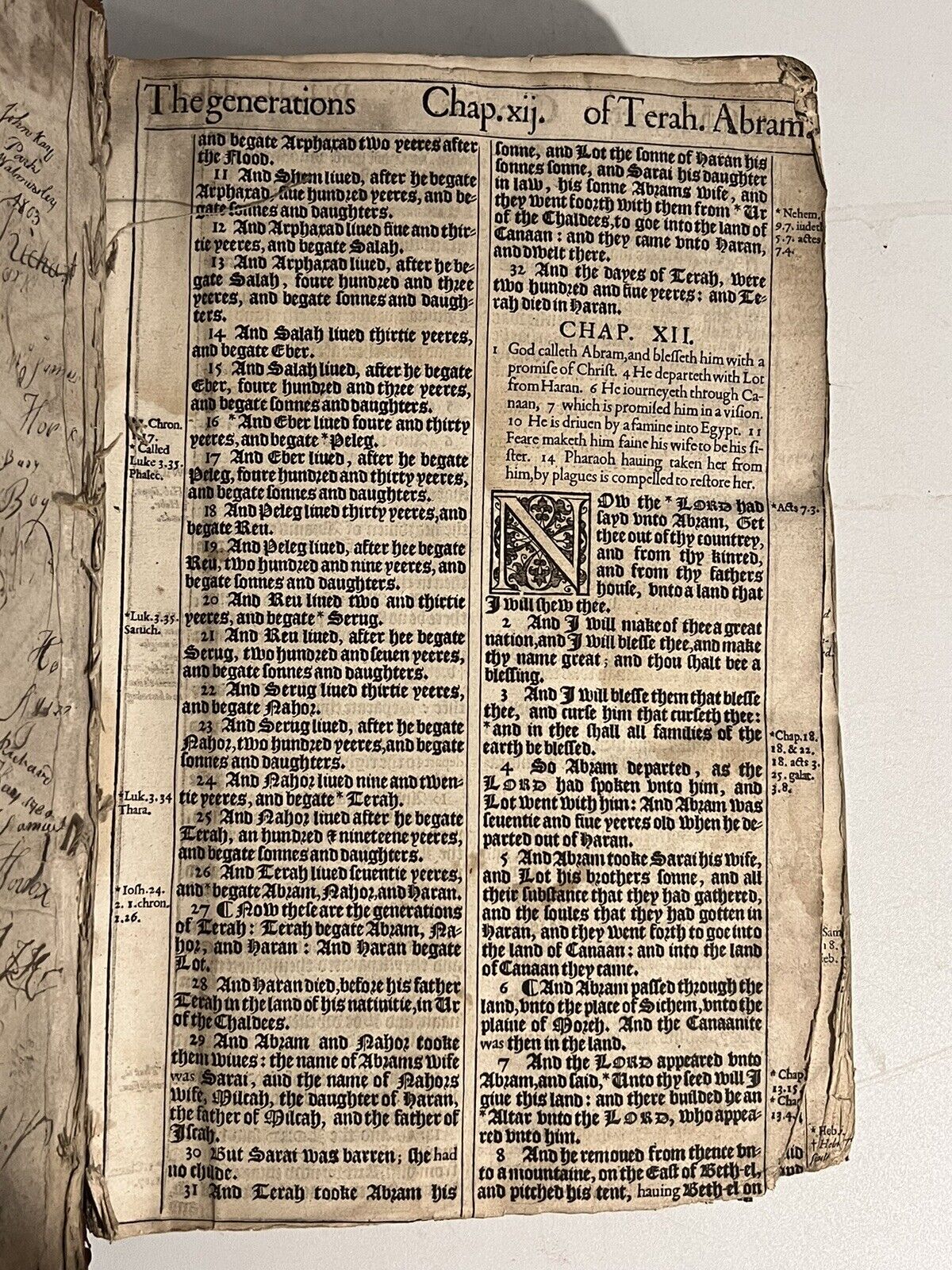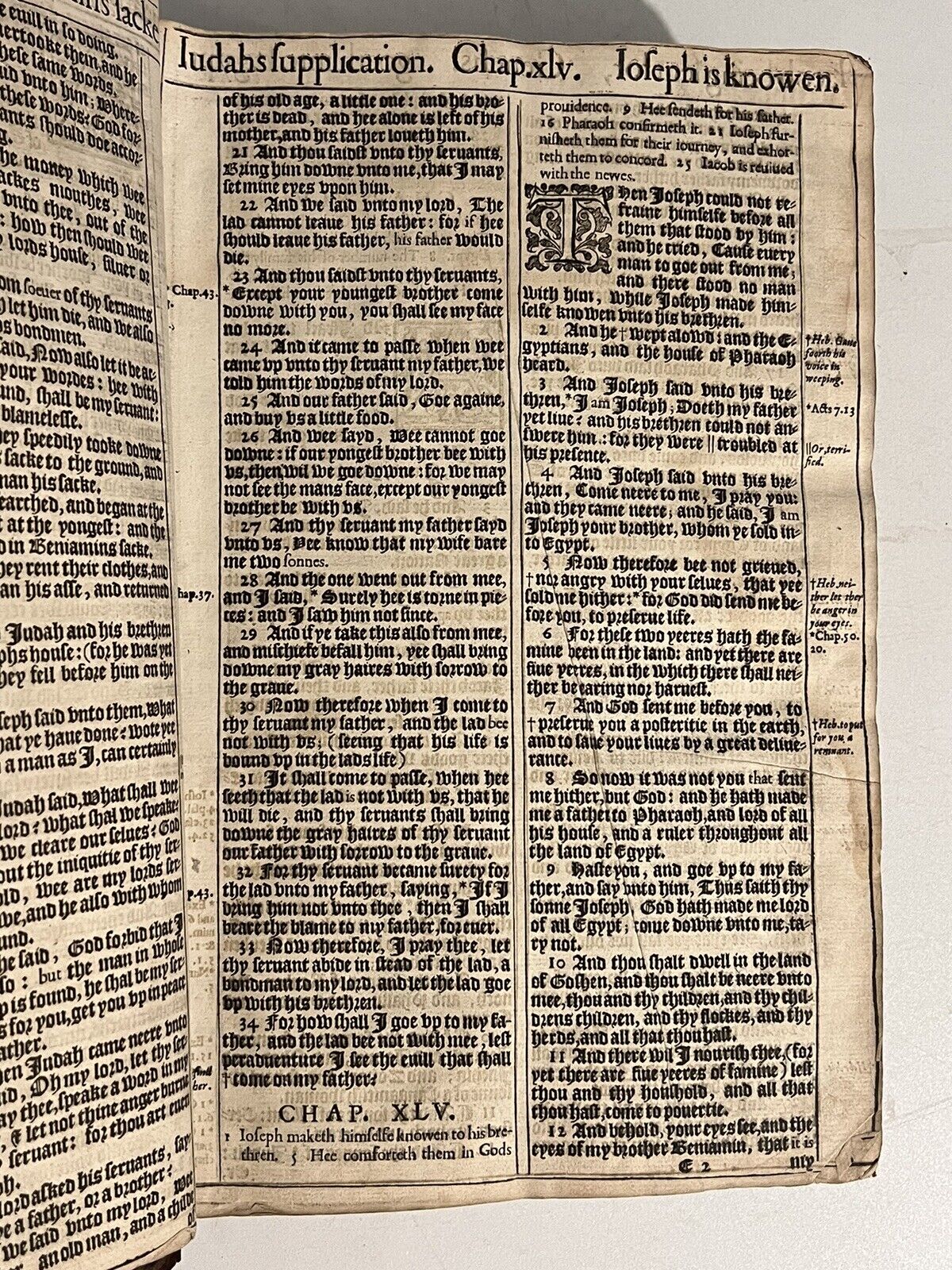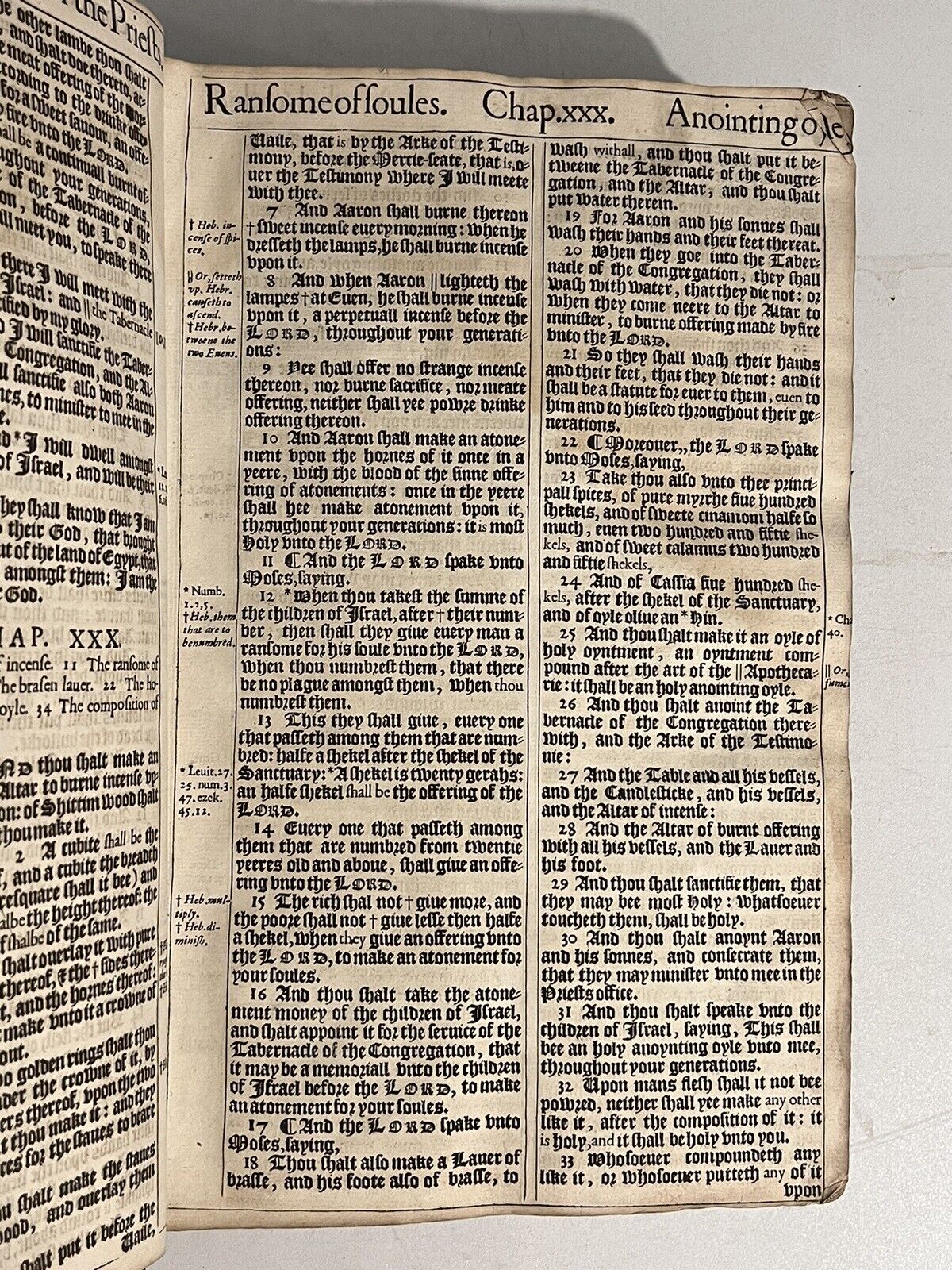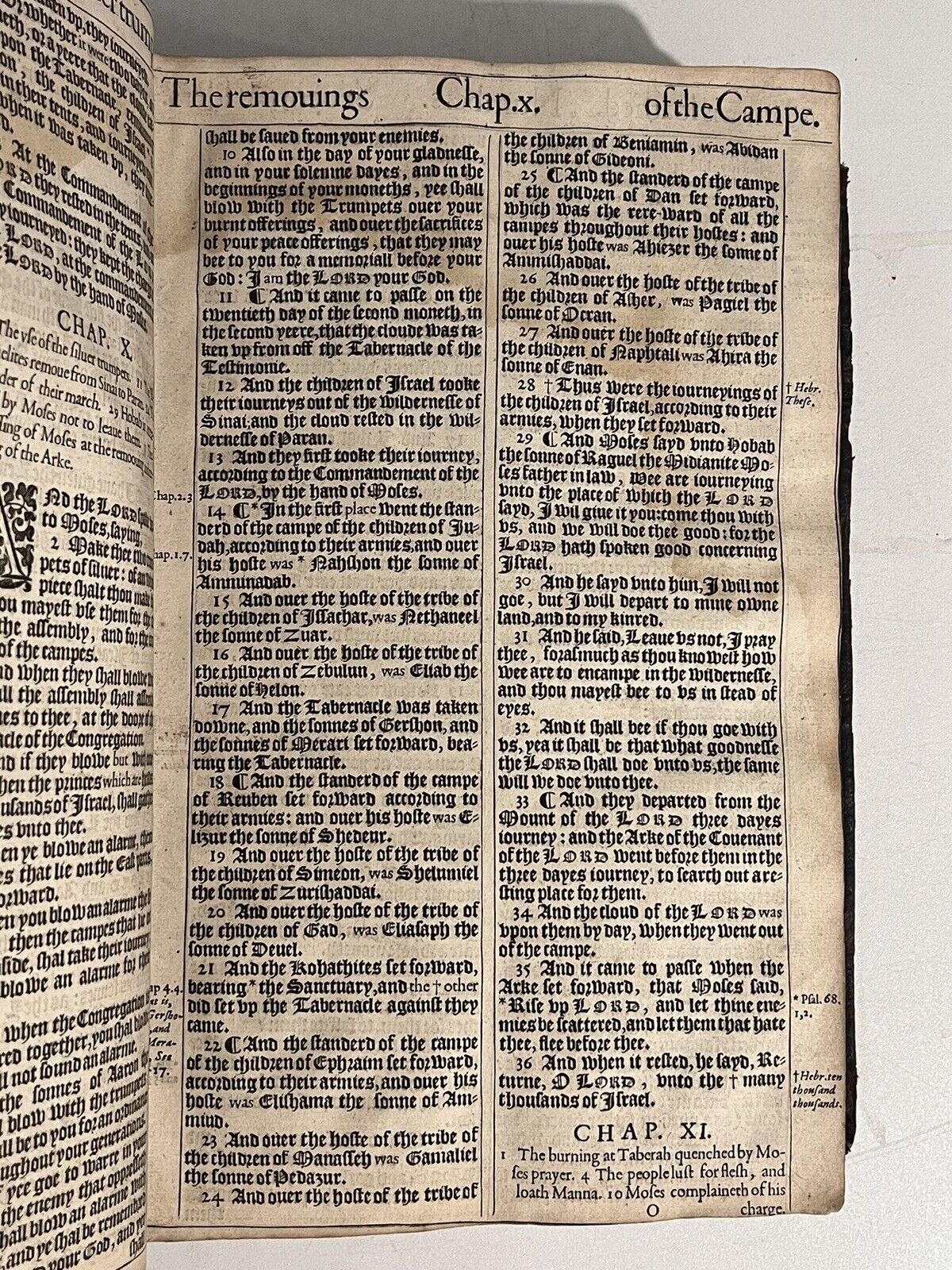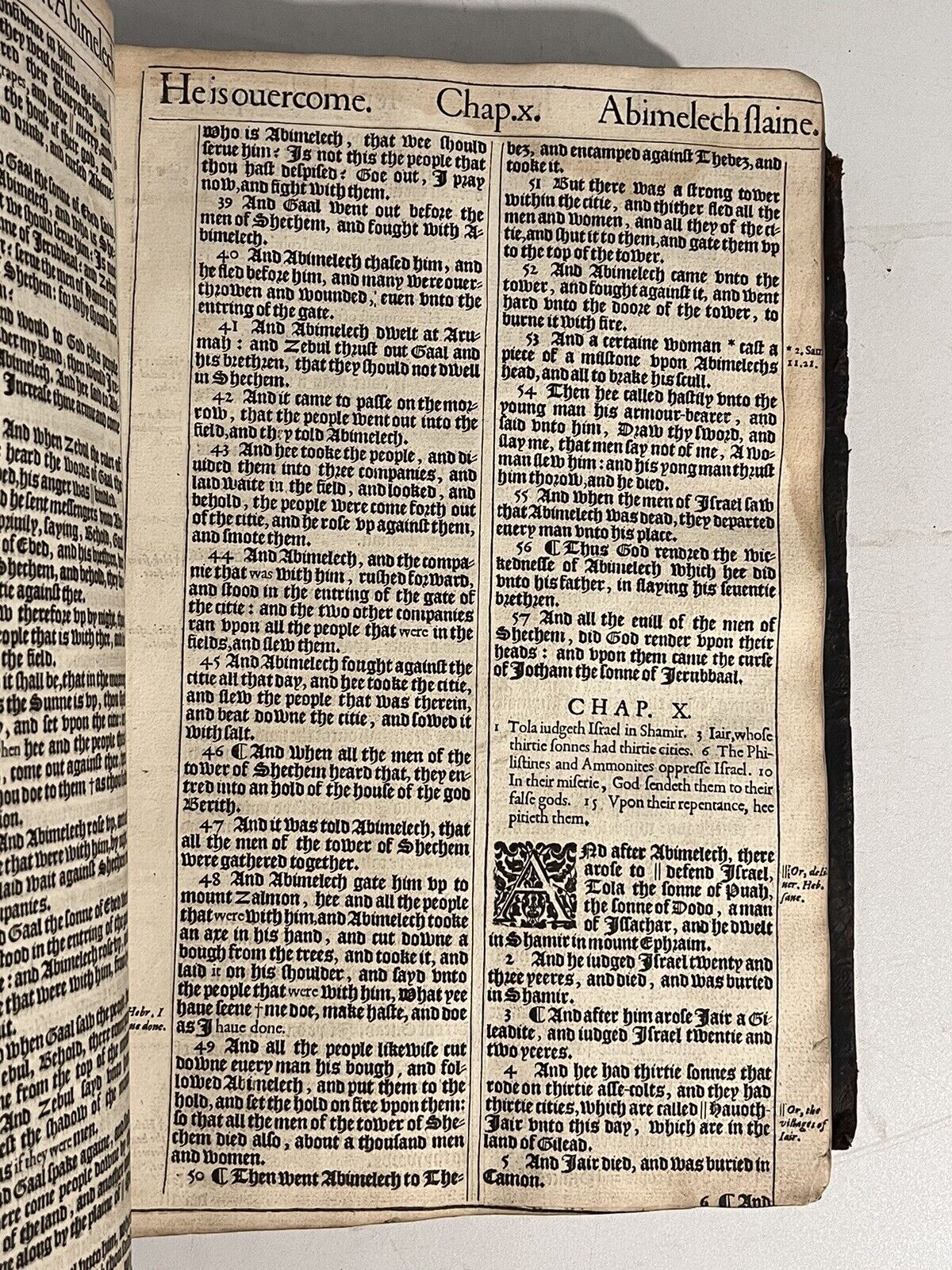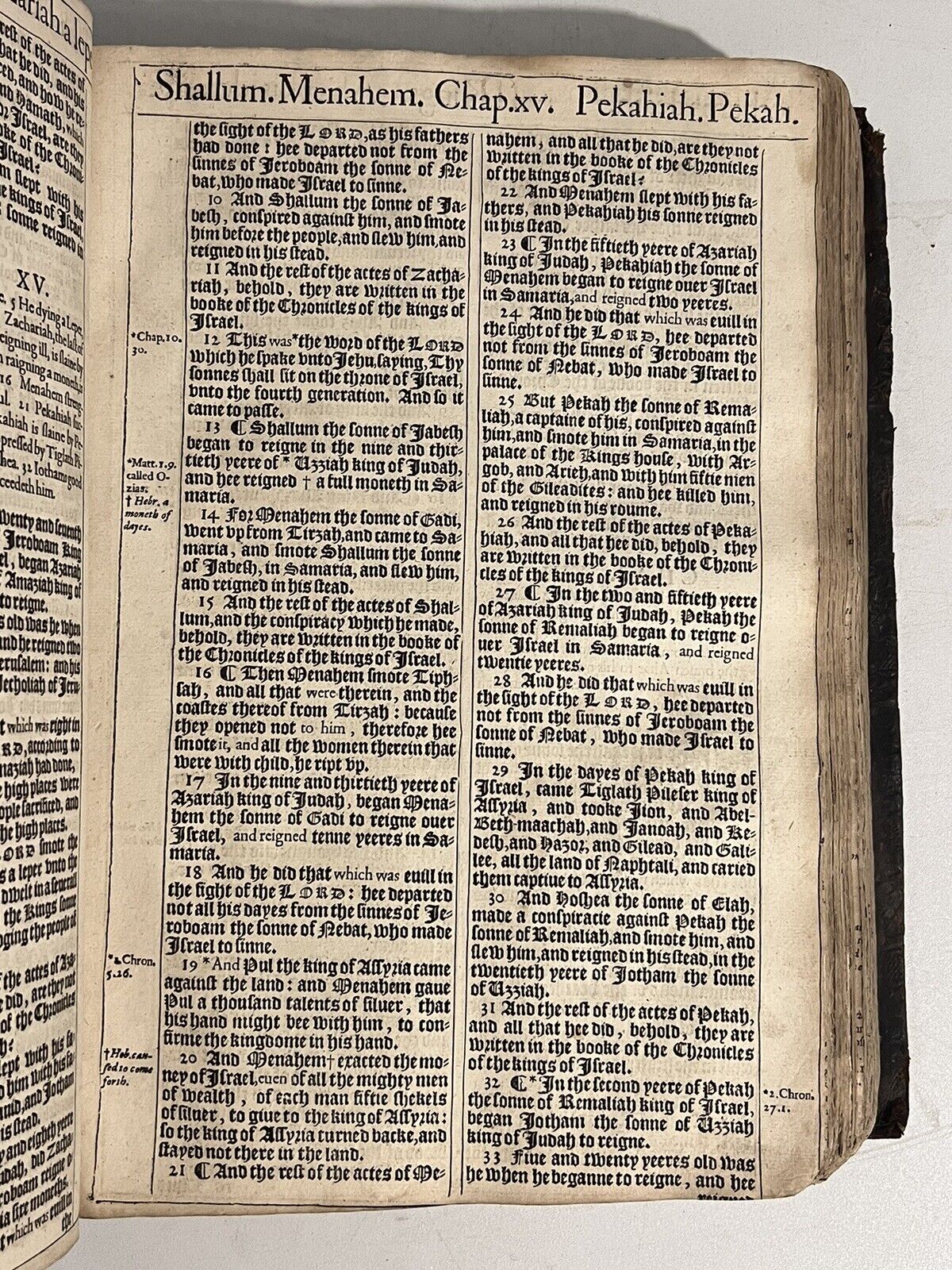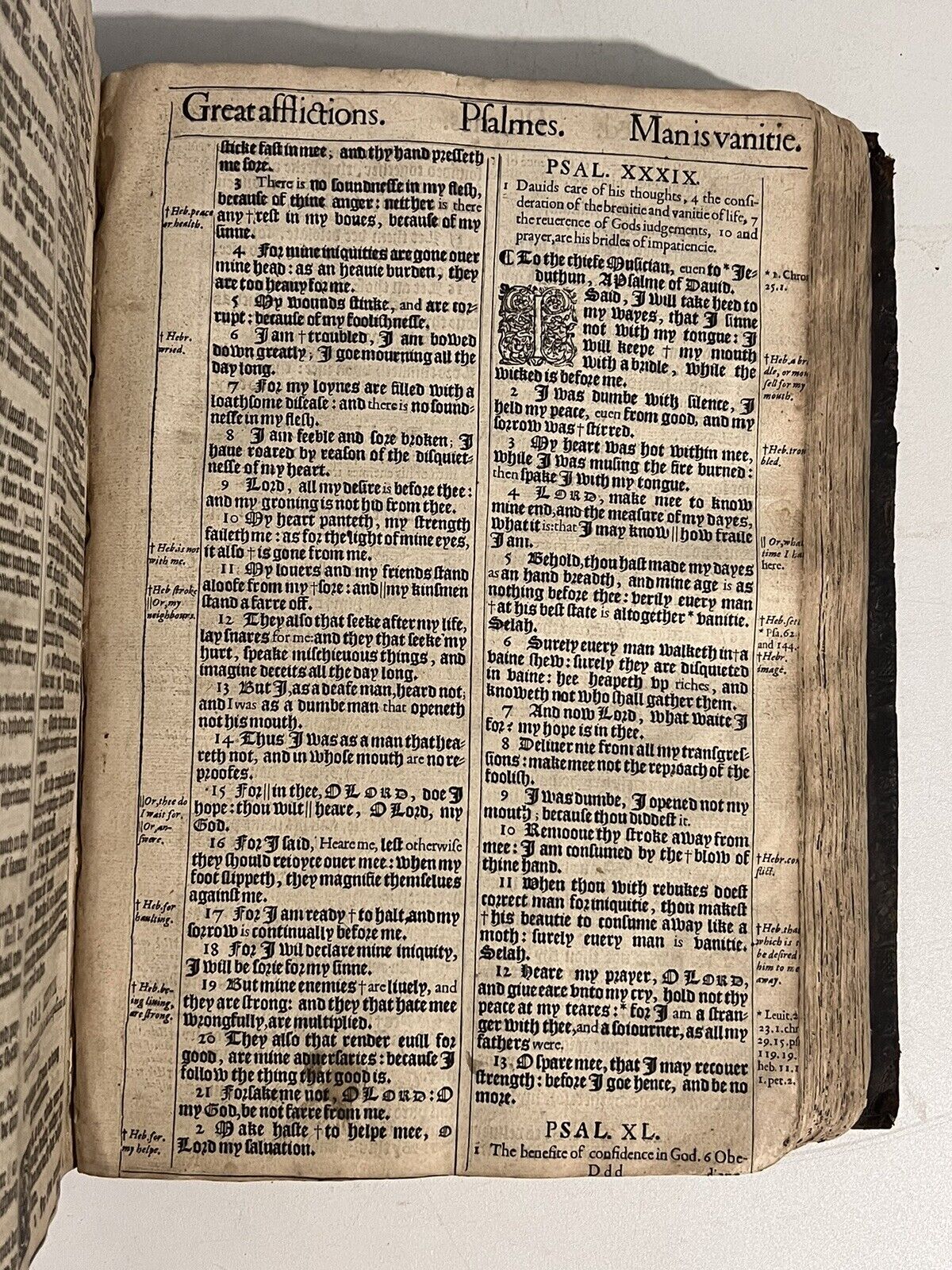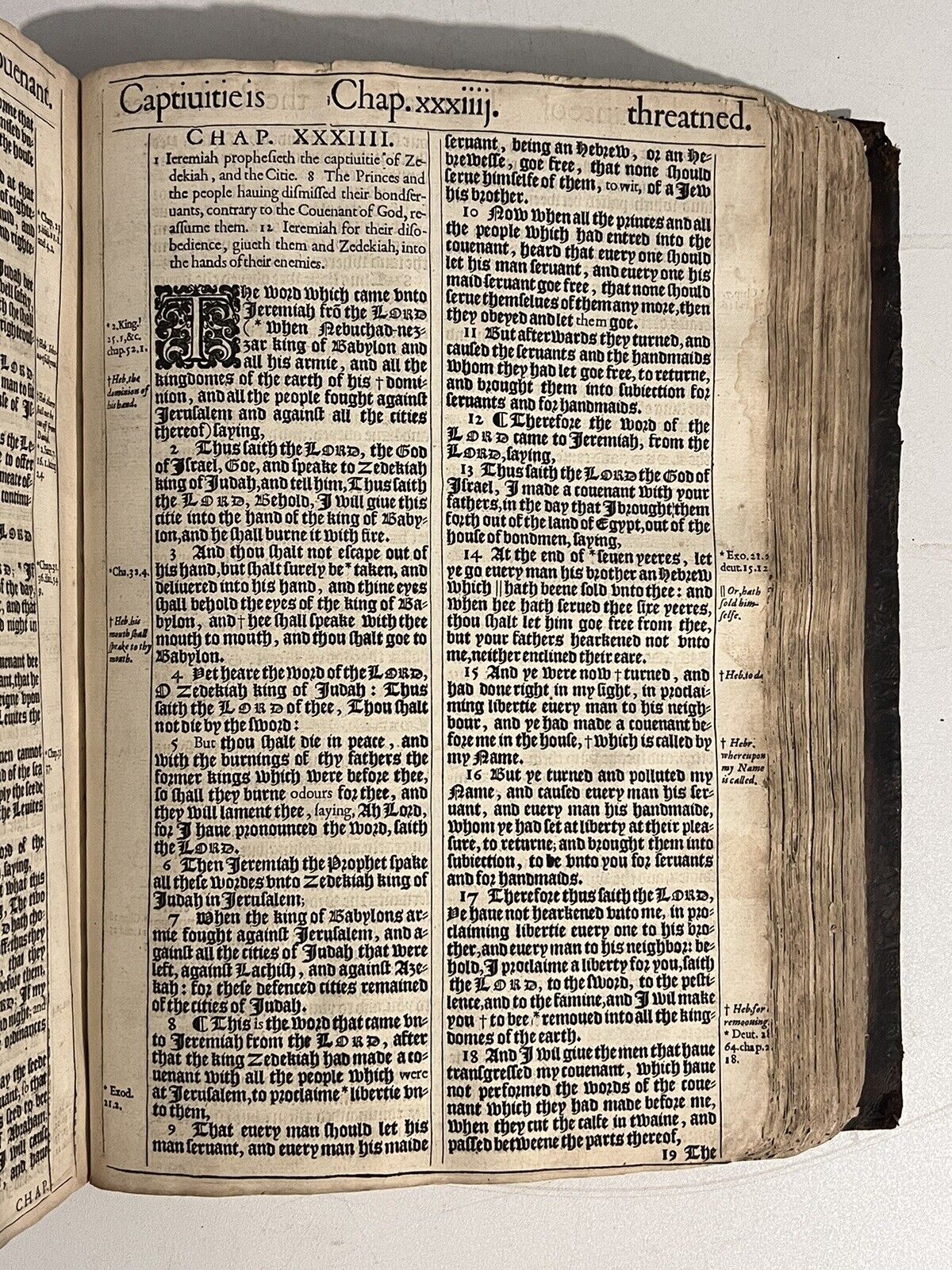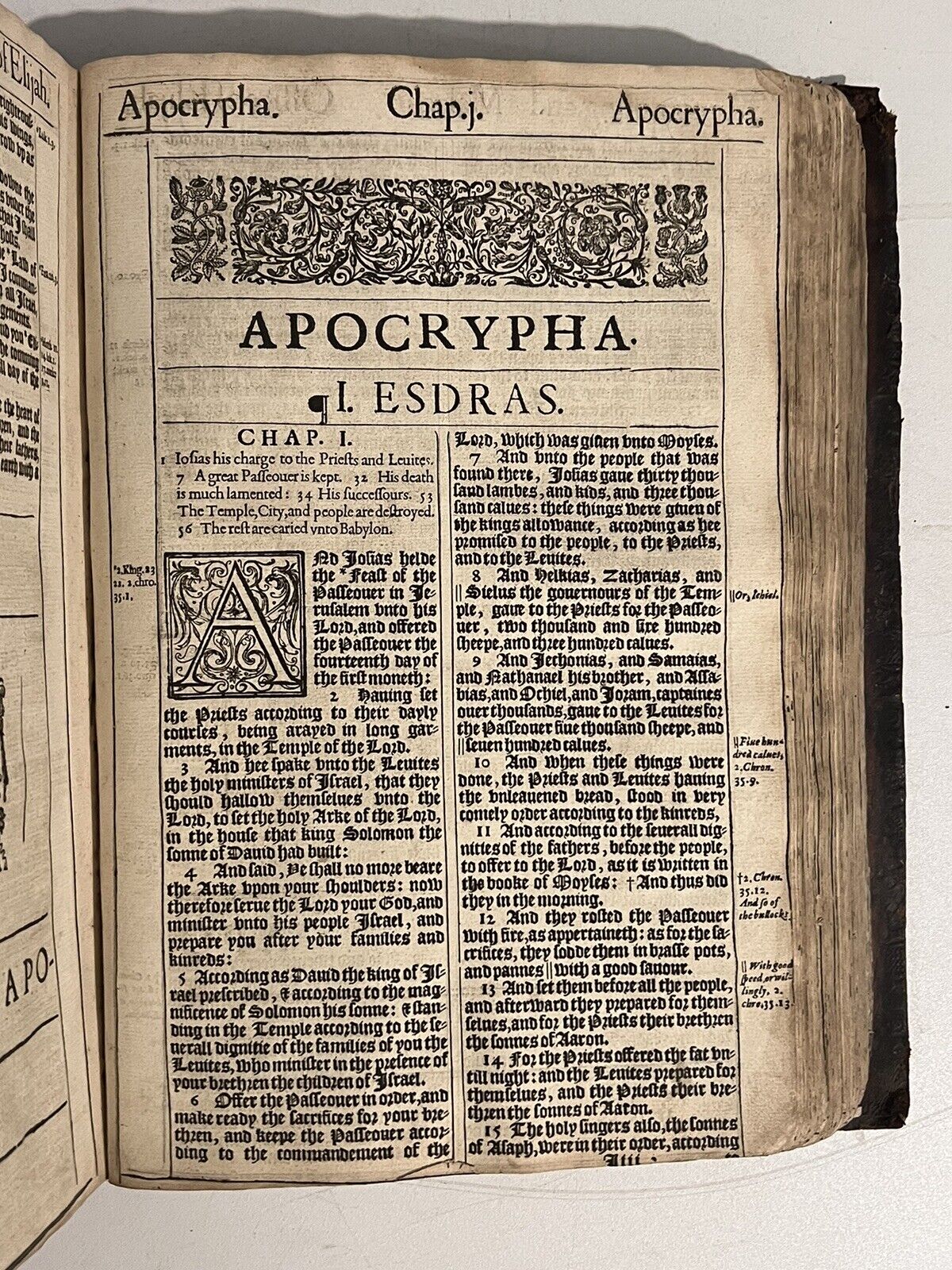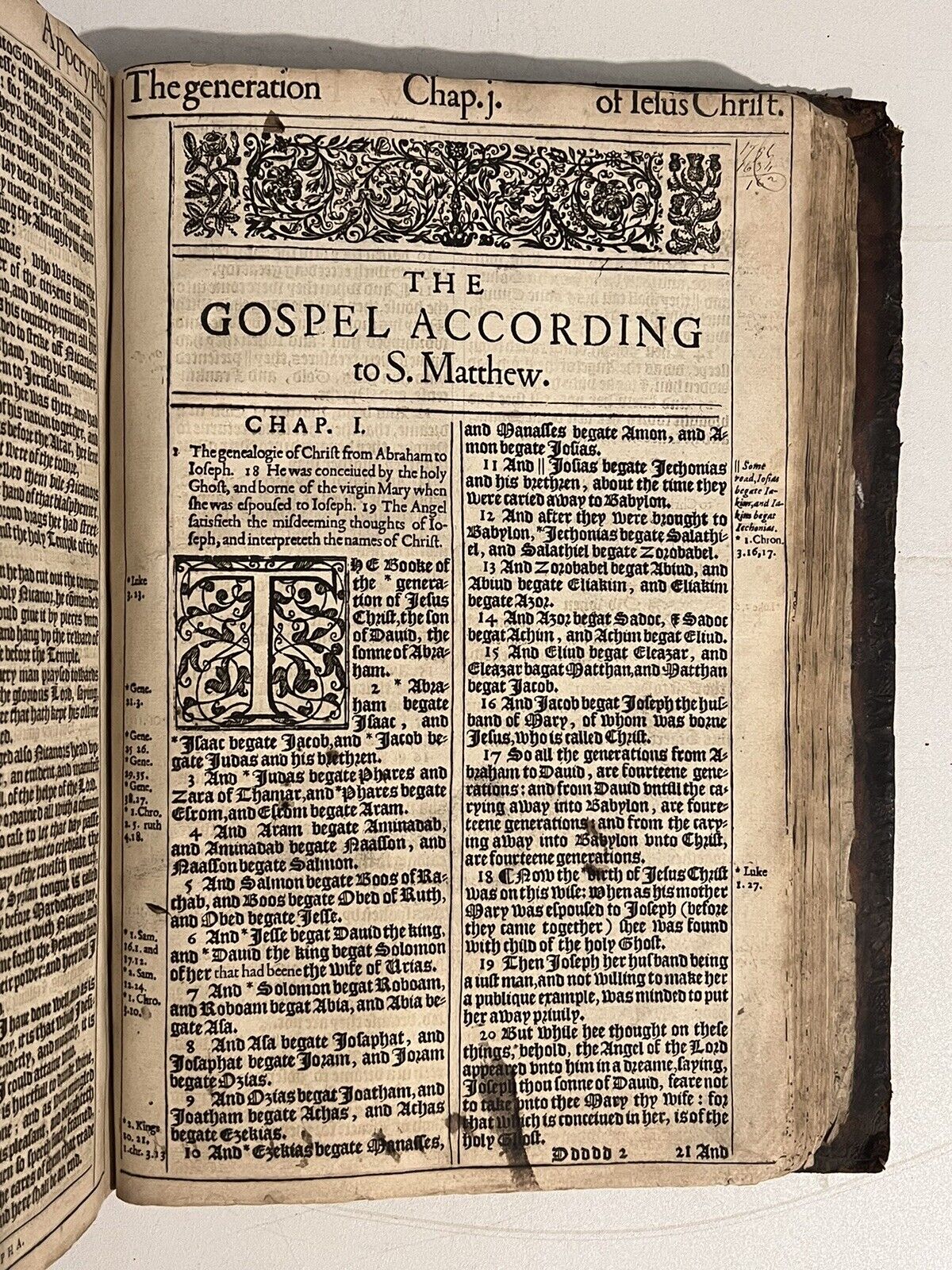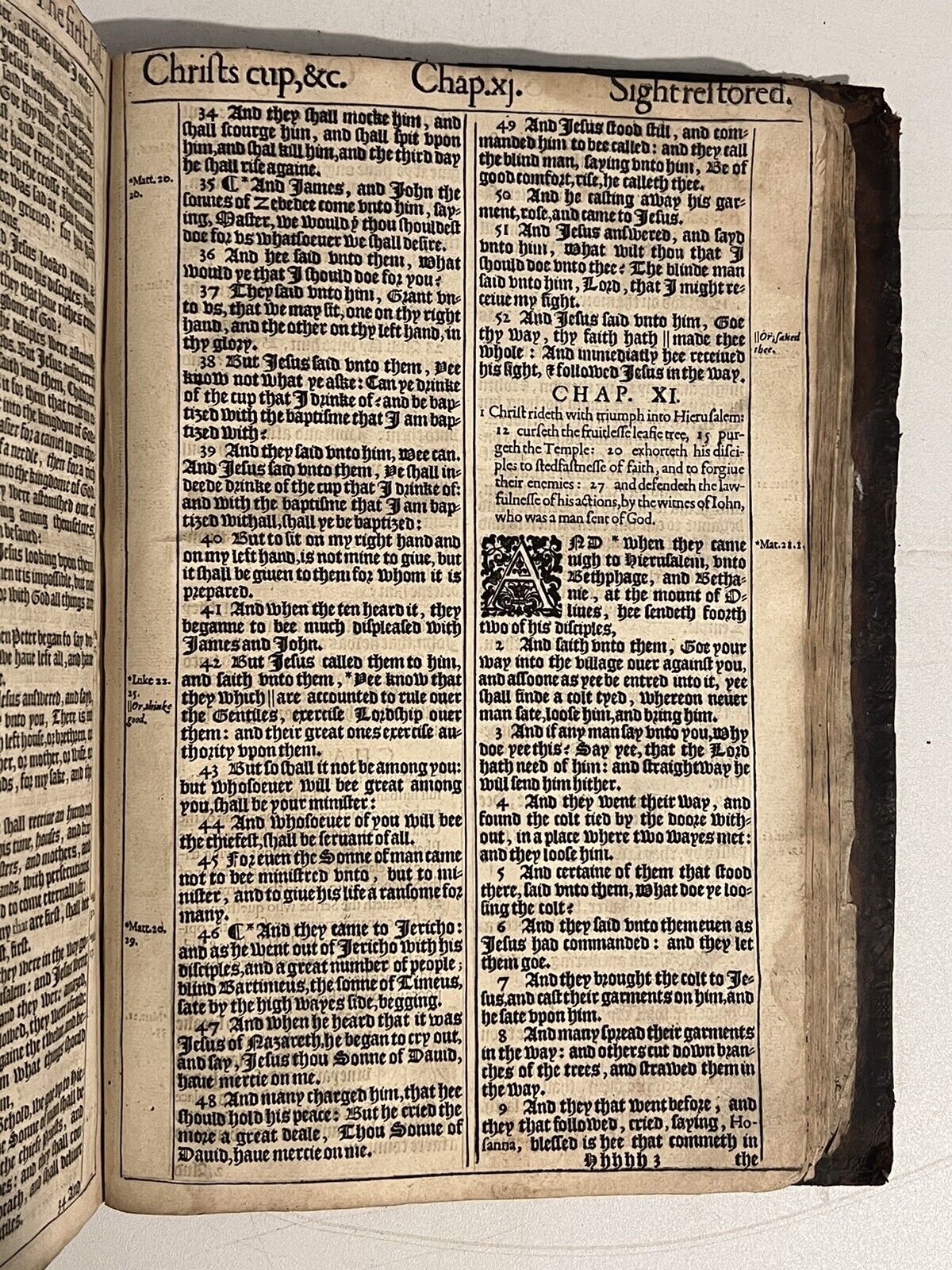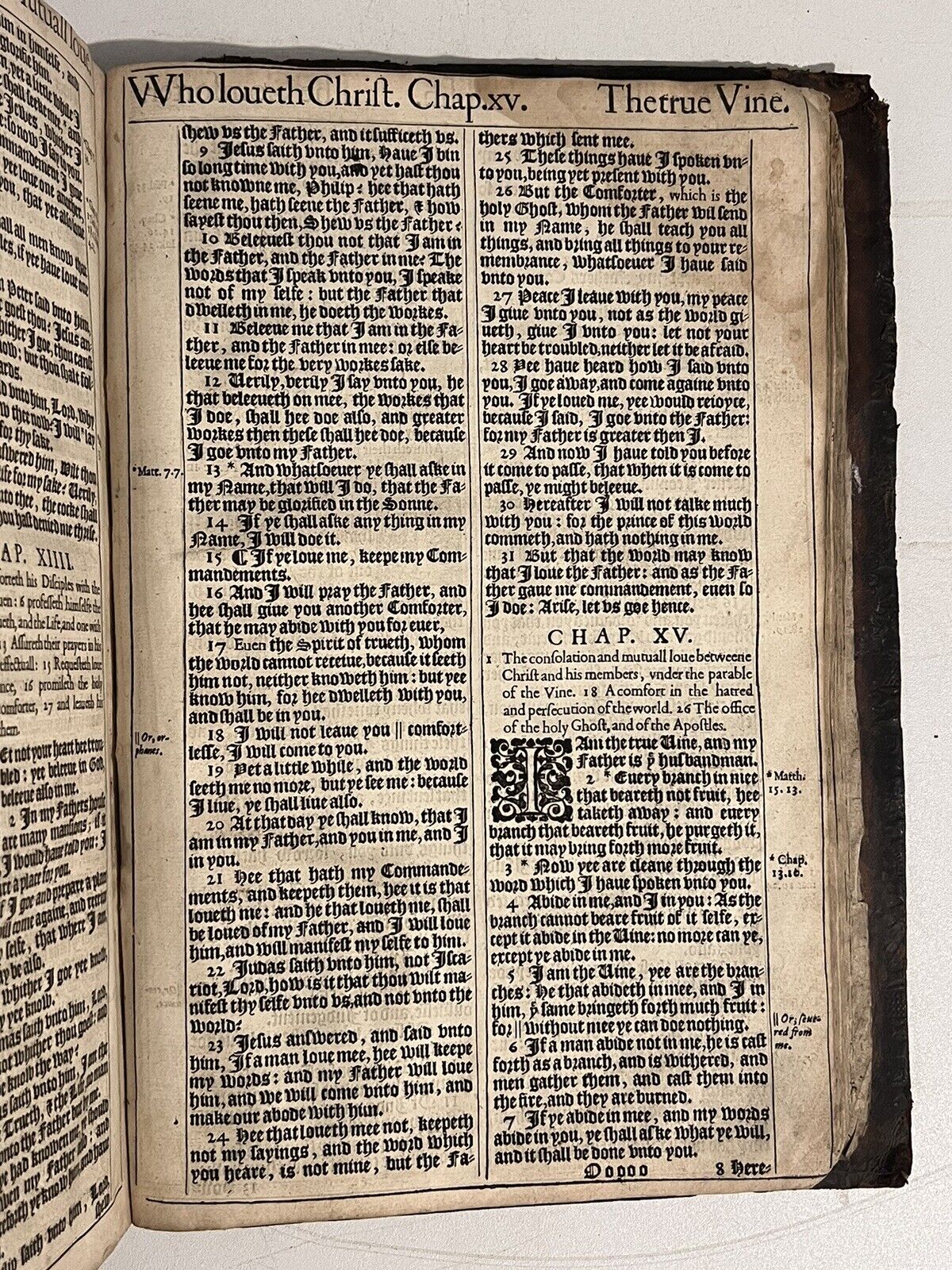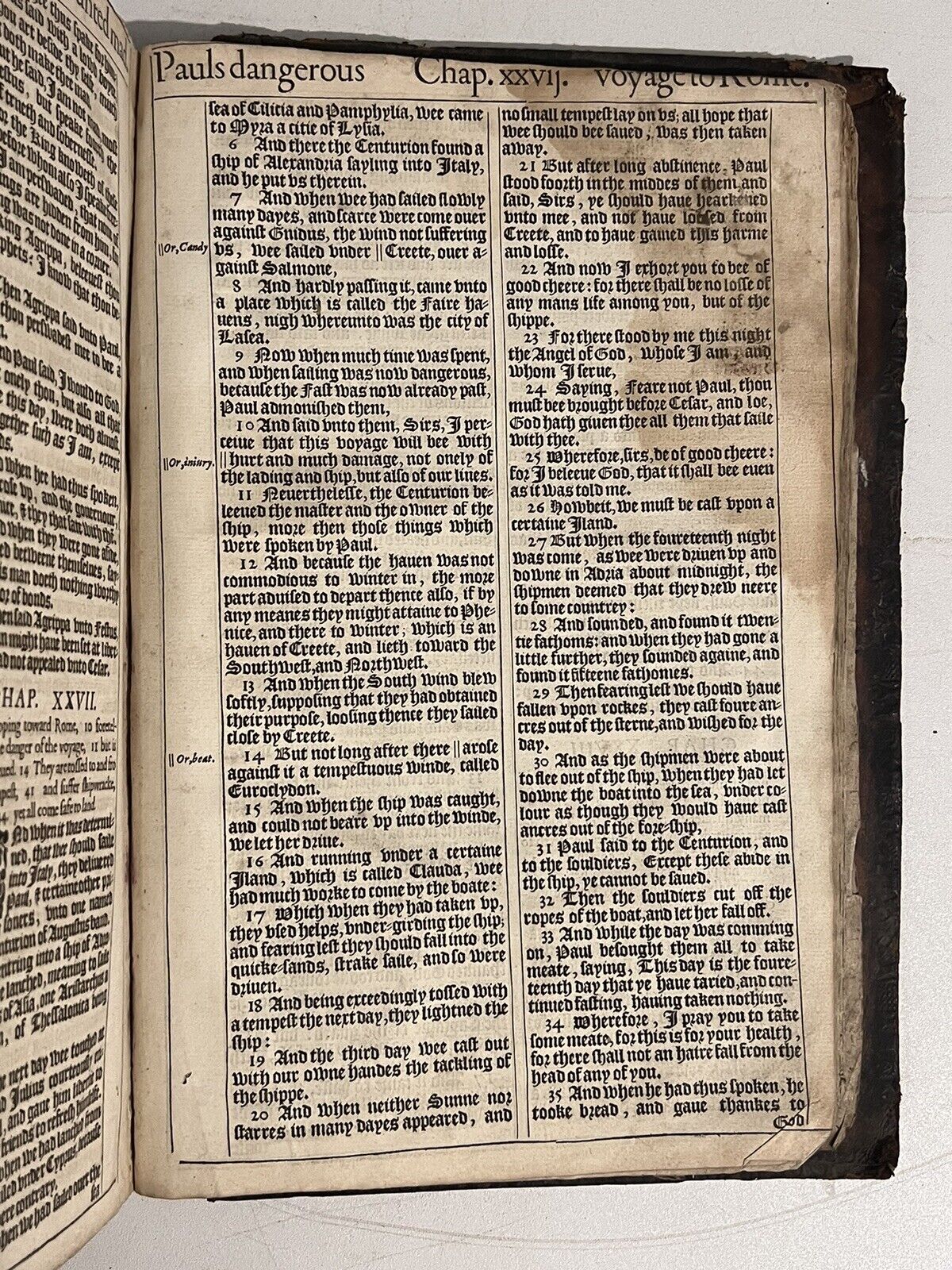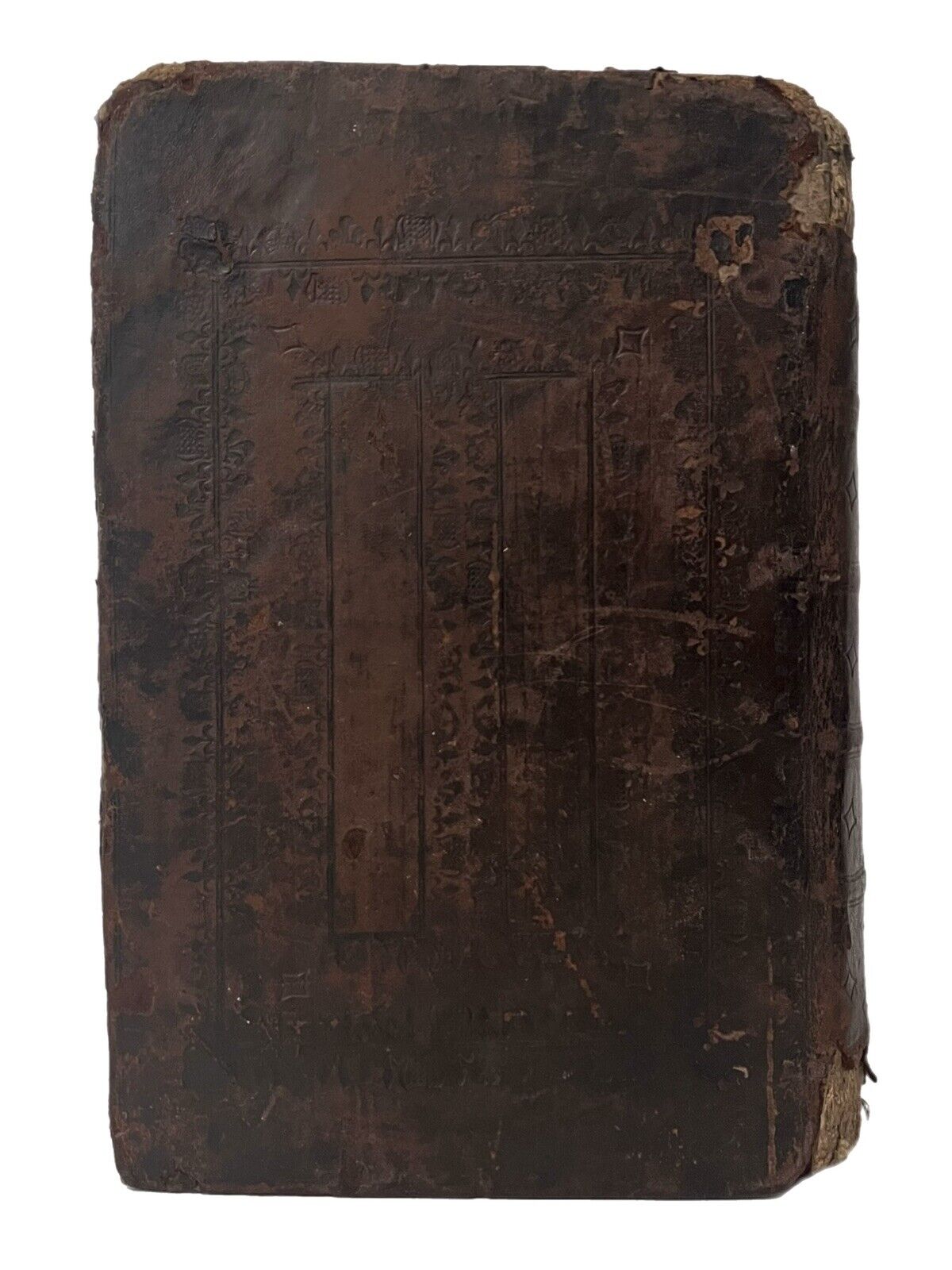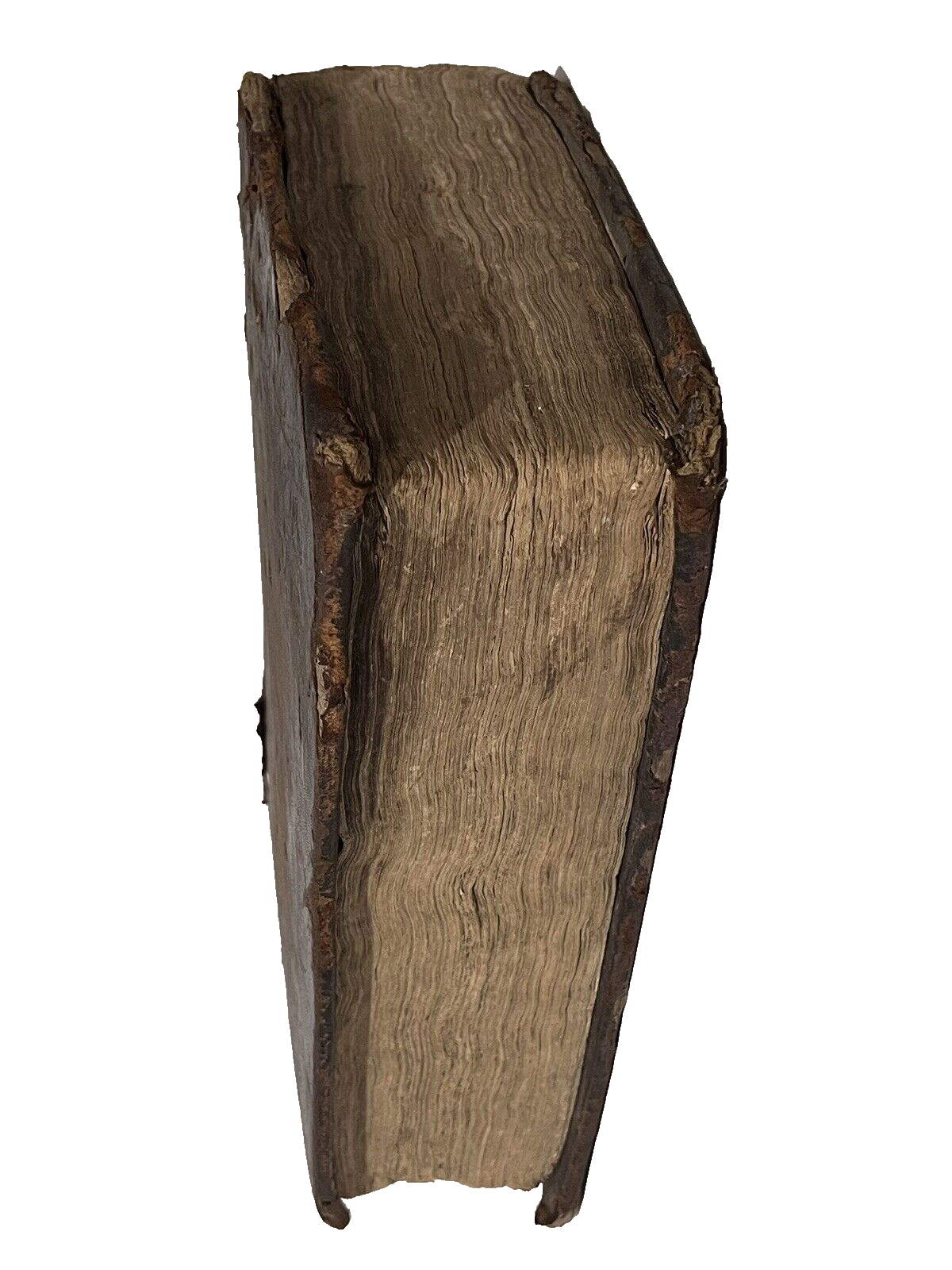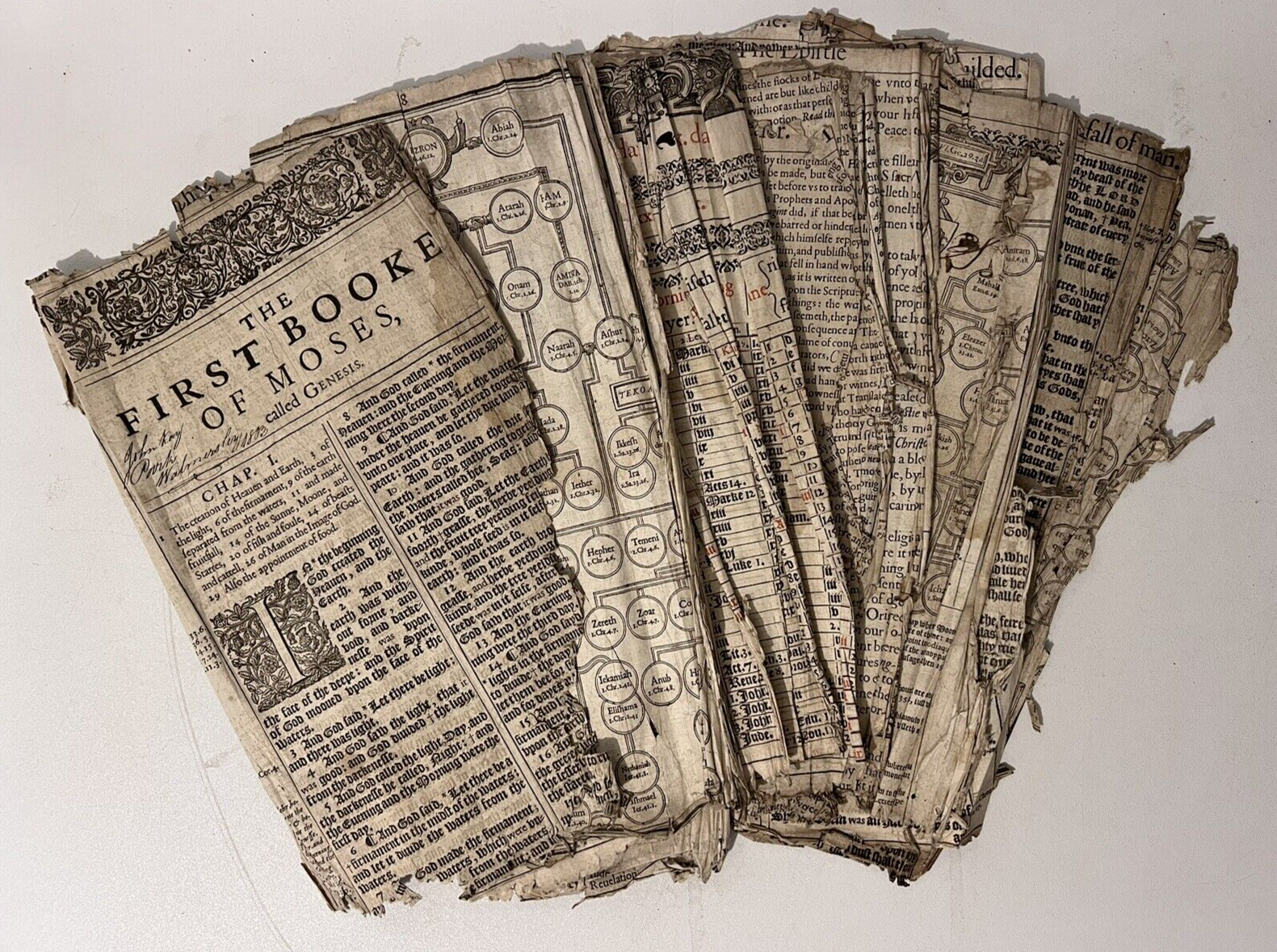The King James Bible Fourth Issue Pulpit Folio
The King James Bible Fourth Issue Pulpit Folio
Couldn't load pickup availability
The Holy Bible, Conteyning the Old Testament, and the New: Newly Translated out of the Originall Tongues and with the former Translations diligently compared and revised, by his Majesties speciall Commandement. Appointed to be read in Churches. Imprinted at London by Robert Barker, Printer to the Kings most Excellent Majestie. Anno Dom 1634
THE RARE FOURTH ISSUE OF THE KING JAMES BIBLE. A STUNNING COPY - COMPLETELY UNRESTORED & ORIGINAL!
-------------------
A beautiful example of a Pulpit folio King James Bible with the iconic black letter type and black bordered text. The text of this Bible has "she" in Ruth 3:15. This copy is interesting for having a mixture of states, as often, with some leaves from the 1613 edition, some from the 1617 third issue, and the majority from the 1634 fourth issue.
This copy is a fantastic example in an original early 17th century English blindstamped panelled binding, clearly intended for pulpit use. It remains almost entirely legible, but would benefit from some sympathetic restoration if desired, though it being entirely original and unrestored certainly has its charm.
-------------------
Provenance:
A significant number of inscriptions are present to both the front and rear pastedowns which seem to indicate that this King James Bible was kept within a Church in Lancashire, England until circa the early 1800s, though these inscriptions seem to exclusively date in the 1700s and early 1800s. There are some now faded inscriptions (illegible) underneath some of these which probably date to the 1600s. At the Book of Wisdome of Solomon in the Apocrypha there is an ownership inscription of a Thomas Booth, perhaps the Thomas Booth (c1759-1836) who lived in North Yorkshire, England and would have been wealthy enough to own this Bible around 1819 where the prior inscriptions seem to chronologically end, and one assumes it would have then been passed by descent to John Booth, his son, after which the provenance can't be traced.
-------------------
Size: 260 x 393 mm (approx.)
Condition:
Original full blindstamped calf binding in a panelled manner. The binding is rubbed with some losses to the leather but presents very attractively indeed, particularly for its originality and lack of restoration. The boards are both attached, the binding is secure, and stands on the shelf without shelf lean, though due to its size is probably best stored laid flat anyway. The page block is not sagged and sits very nicely in the binding. The page edges show very attractively, also without restoration - though some Japanese Kozo paper restoration may well be welcome to some leaves at the extremities of the text block and of those leaves currently detached.
The attached leaves begin at A6 (i.e. Genesis 11), from whence the text block continues uninterrupted until 6D2 (Revelation 13). There is some dampstaining in the upper right corner beginning in the New Testament and gradually becoming more substantial where after Acts it starts to become noticeable, but it does not render any text illegible, rather there is some loss to the leaves in this upper right corner where around the area of 1 John and later this starts to cause minor text loss, significant around the start of Revelation. Towards some of the final Epistles there are also some losses at the foot of some leaves.
Generally, the text block is fully legible and shows nicely, but has intermittent dampstaining, heavier in places as described above. The vast majority of the OT (practically all after Genesis 11-12), the Apocrypha, and the Gospels are textually in excellent condition. Some leaves are occasionally a little ragged at the edges as typical but outside of those mentioned above, this generally only slightly affects catchwords/signatures or printed marginalia.
This copy does lack several leaves, including both title pages and the map (as almost always found), the third textual leaf of Genesis, and the penultimate leaf of Revelation. It also lacks several leaves of the preliminary matter (genealogies, kalendar, etc), though much of that remains preserved, but detached. All of the extant preliminary leaves prior to A6 are detached as well as the majority of the book of Revelation. However, compared to the vast majority of extant examples, it is well preserved in terms of its collation. The vast majority of the text block is also in an excellent state of preservation, though much towards the end of the New Testament could do with some sympathetic restoration, as well as of course the reattachment of the detached leaves, as well as perhaps those detached leaves and those with losses at the edges being mounted with Kozo paper. One could restore the binding, though it is probably better left alone.
[Herbert 487; D&M I, 376].
